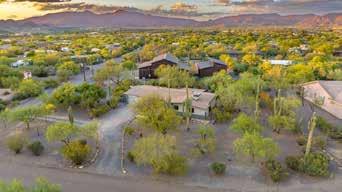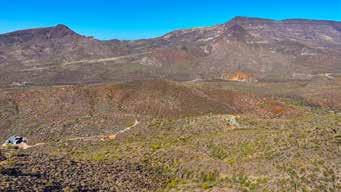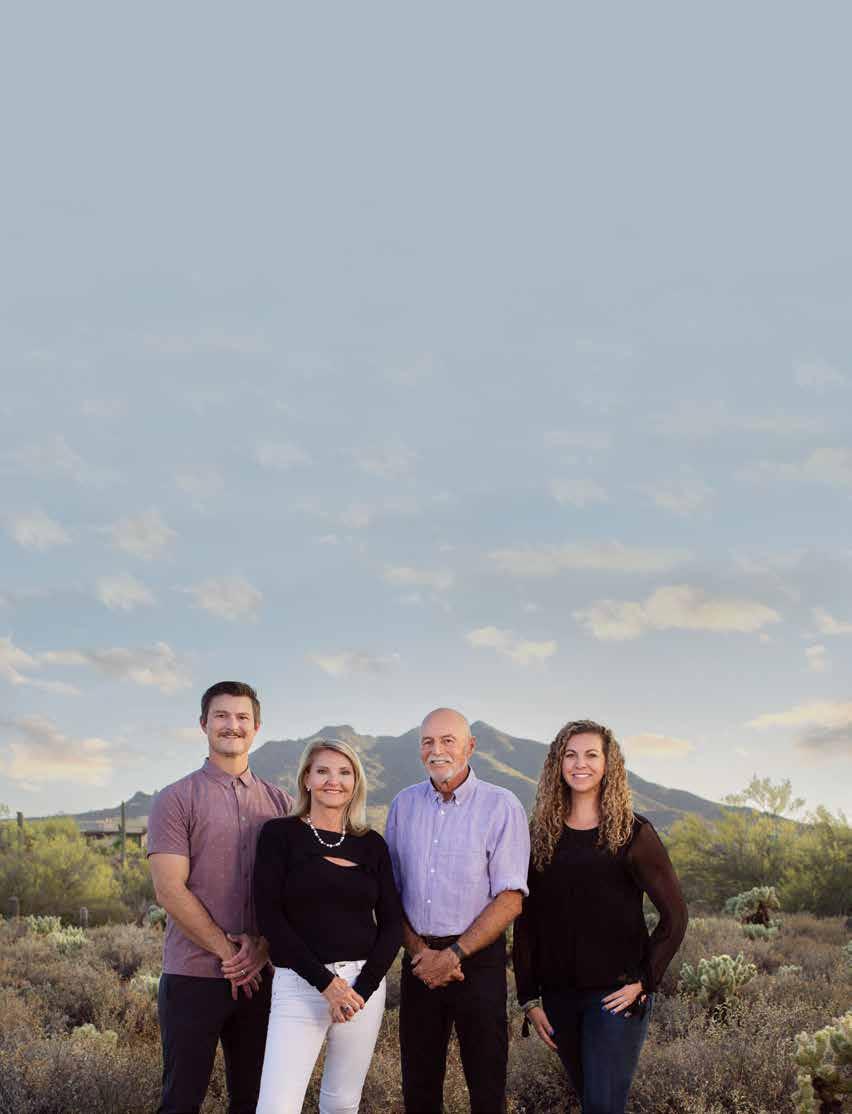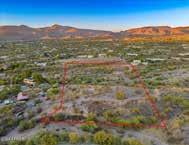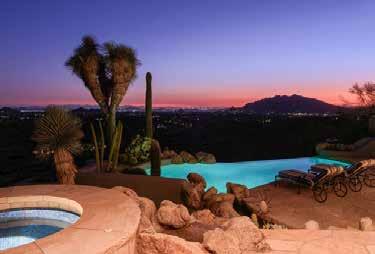
E T A G E C H A N G E Y O U .

C H A N G E
T H E W A Y Y O U A G E .

















E T A G E C H A N G E Y O U .

C H A N G E
T H E W A Y Y O U A G E .















We each have our own vision of “Contemporary” and “Southwest” design. When planning your home’s decor, these terms might describe what you’re seeking — perhaps that organic, earthy feel of the high Sonoran Desert that makes a space truly yours. Here are a few tips from Sue Bickerdyke on how to update your home with contemporary Southwest art.
SCALE: Our desert homes typically feature soaring ceilings and expansive floor plans — perfect for showcasing larger pieces. Don’t hesitate to make a statement with oversized art. Choose vertical pieces for tall, narrow spaces and horizontal works for wider walls.
COLOR: Create visual harmony by repeating your accent color in three distinct places throughout a room, like a ribbon tying everything together. Experiment with vibrant hues or soft pastels against neutral backgrounds or dramatic dark walls. Your home should reflect your personality — have fun with it!
CONTRAST: Opposites truly do attract! Bold pairings like black and white instantly create contemporary appeal. Every color has its complementary partner, and thoughtfully selected furniture can establish striking contrasts throughout your home.
SUBJECT: The imagery in your art sets the mood for your entire home. Landscapes bring the majesty of the desert indoors, while wildlife artwork celebrates our cherished desert

creatures. Something as simple as a painting of baby quail can evoke smiles and warm family connections.
TEXTURE: Metallic elements add reflective dimension to any space. Gold or silver leafing layered beneath paint creates rich textural depth, while paintings on metal surfaces can transform a landscape’s mood through luminous backgrounds.
METALLIC AND GLAM: These elements introduce sophisticated drama to your interior design, elevating everyday spaces to something extraordinary.
LIGHT: Consider lighting as your secret ingredient — both in the interplay of light and shadow within artwork and in how you illuminate each piece. Proper lighting reveals intricate details and enhances colors that might otherwise go unnoticed.
MIXED MEDIA: These versatile works offer the ultimate combination of color, texture and metallic elements — bringing together all the principles of exceptional design.



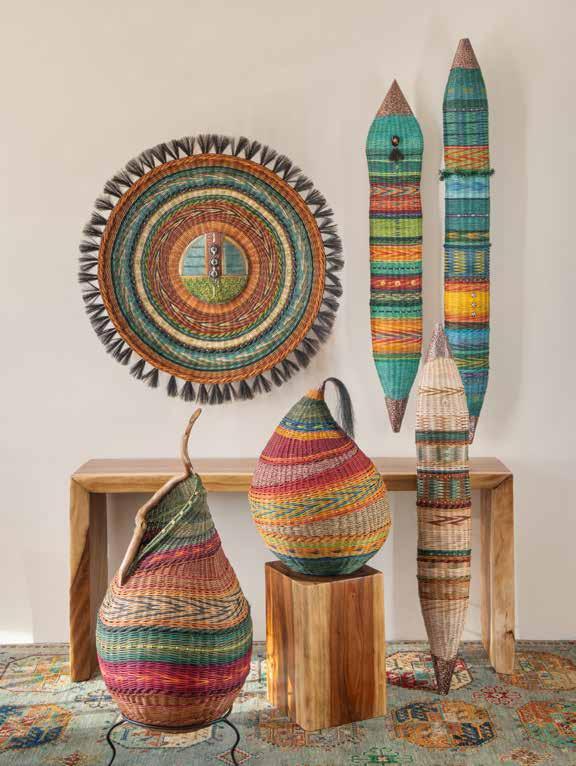




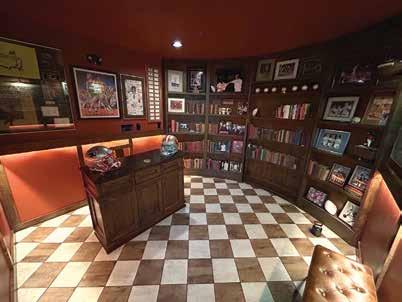



THURSDAY, MAY 15 FROM 4 TO 7 PM
Share the passion of Ulises “Rene” Palomino demonstration at 5:15 PM

We’re delighted to welcome Ulises “Rene” Palomino to Sue Bickerdyke Interiors Fine Art Gallery. His life-size cacti capture the essence of contemporary Southwest glamour, painted on the reverse side of acrylic sheets with gold or silver leafing and layers of paint. Join us May 15 at 5:15 p.m. to meet Rene and watch his demonstration during Carefree’s Third Thursday Art Night.







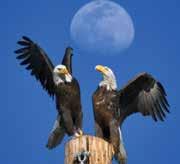



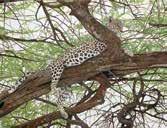

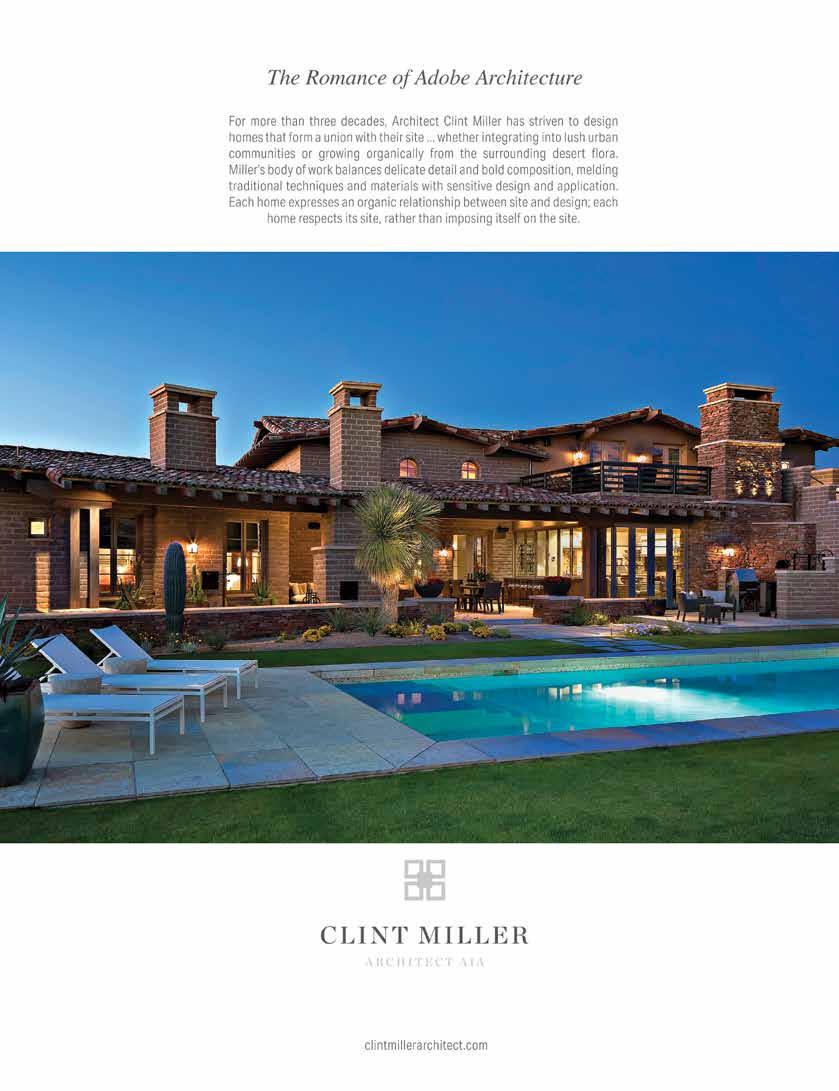
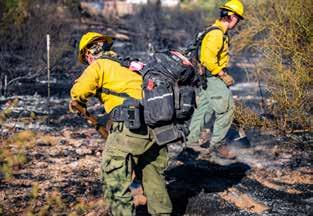


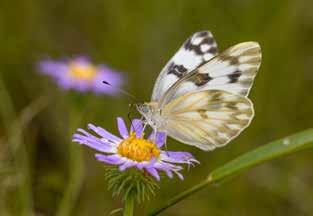



Publisher Shelly Spence
Managing Editor
Joseph J. Airdo
Graphic Designer
Meaghan Mitchell
Contributing Writers
Joseph J. Airdo
Francine Coles
Shannon Severson
Photographers
Francine Coles
Loralei Lazurek
Advertising Sales
Cindi Calcinari
860-966-3271 cindi@imagesaz.com
Images Arizona P.O. Box 1416
Carefree, AZ. 85377 623-341-8221 shelly@imagesaz.com imagesarizona.com

AAs the desert temperatures begin their annual climb toward summer, there’s a palpable energy in the air. May in Arizona marks that precious transition — when we savor the last few weeks of open windows and outdoor dinners before the summer heat settles in for its extended stay. It’s a time of preparation and appreciation, much like the themes woven throughout this month’s issue of Images Arizona
Our opening feature, “Shield & Shelter,” couldn’t be more timely as we approach wildfire season. Shawn Gilleland’s expert guidance on creating defensible space and developing evacuation plans provides essential preparation for those of us in wildland-urban interface areas — allowing peace of mind as the landscape dries.
This month we also explore the fascinating dynamics between humans and wildlife in “Burros in the Balance” and “Hoof Prints & Habitats.” These complementary features — following Stacie Thomas’ rescue work and the BLM’s management strategies — highlight the delicate dance of coexistence happening as development pushes into traditional wild areas.
For those who appreciate nature’s more delicate artistry, our photo essay “Wings of Wonder” showcases Bruce D. Taubert’s extraordinary macro photography of butterfly and moth wings. His images reveal intricate patterns invisible to the naked eye — a reminder that sometimes the most breathtaking beauty exists in the smallest details.
As you explore these pages, I hope you’ll be inspired to look at our desert home with fresh eyes — seeing both the challenges and wonders that make Arizona such a remarkable place to live.
Cheers!
Shelly Spence Publisher, Images Arizona
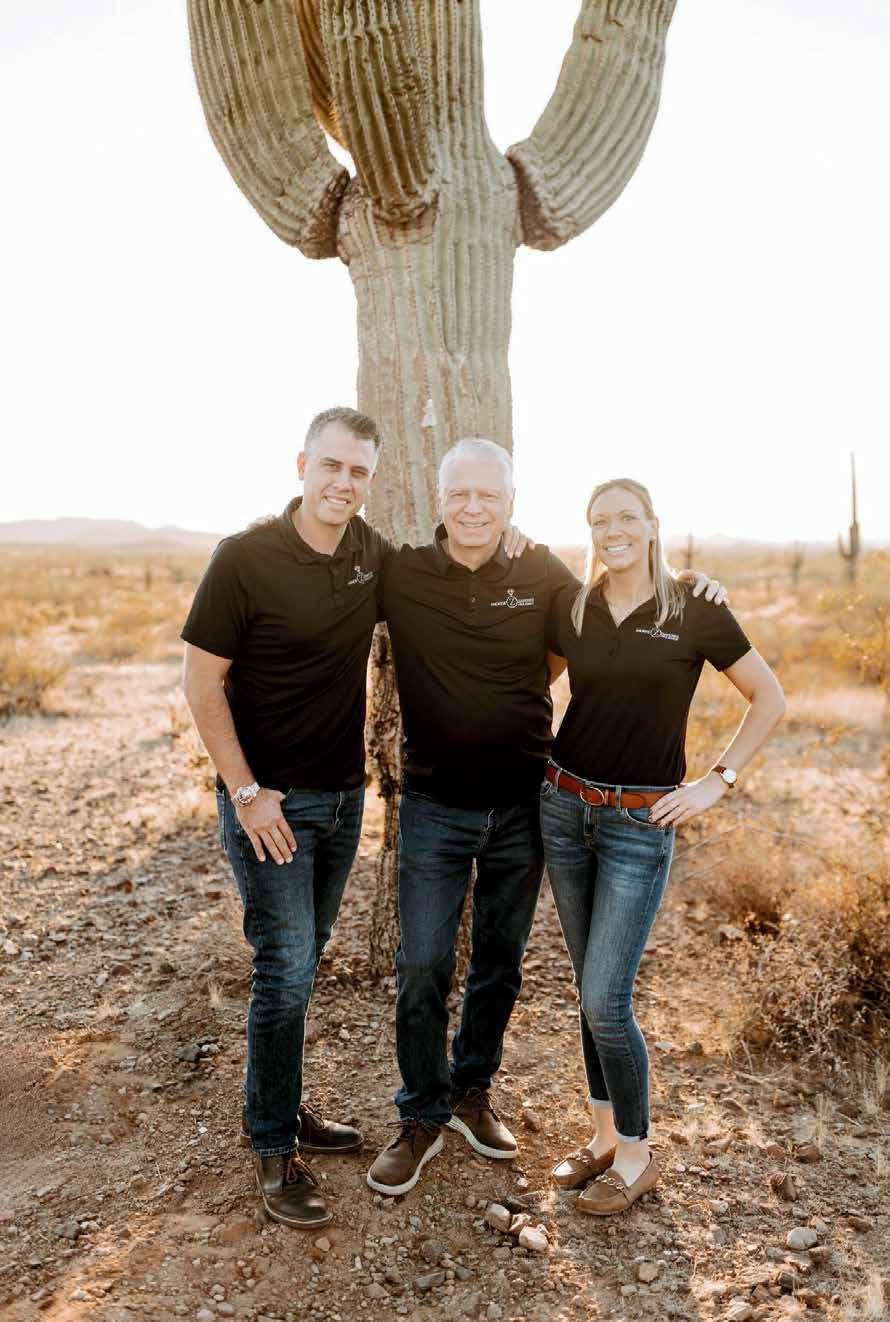









AAs Arizona’s summer approaches, so does the looming threat of wildfire season for residents in the wildland-urban interface (WUI) areas. For homeowners in Rio Verde Foothills, Desert Hills, Carefree, Cave Creek and North Scottsdale, preparation isn’t just recommended — it’s essential. The time to act is now, before the first smoke appears on the horizon.
This year’s fire season could be particularly challenging. This spring, the Arizona Department of Forestry and Fire Management warned that lingering warm and dry conditions, coupled with drought-stricken fuel, could drive widespread fire activity. More than half the state is in extreme drought status.
“This year’s season is not based on elevation or fuel type,” explains DFFM State Fire Management Officer John Truett. “A lackluster winter and spring, in terms of rain and snow, have really put us at a disadvantage statewide.”
Areas south of the Mogollon Rim, including the Sonoran Desert and southern Arizona, face potentially larger-intensity fires due to fuel types and loading. Moisture in late March and early April may have provided a brief reprieve, but officials remain concerned about the season ahead. Last year, Arizona firefighters responded to 2,162 wildfires — a 33% increase from 2023 — burning 282,507 acres across private, state and federal lands.
The absolute mustdos include creating defensible space or, at minimum, thoroughly cleaning up your property. Families should discuss evacuation plans together and have a clear idea of what actions they would take during an emergency.
Recent advancements in firefighting techniques include more rapid deployment of air operations during wildfires, along with drone mapping and artificial intelligence-based prediction tools that help anticipate fire behavior. But the best defense begins with homeowners themselves.
These preparations aren’t just about protecting material investments. They’re about preserving peace of mind, family safety and community resilience during a season that grows more unpredictable each year.
This month, with Shawn Gilleland, public information officer for Rural Metro Fire and Arizona Foothills 911, as our expert guide, Images Arizona explores how to transform your property from vulnerable to vigilant.
“The single most important wildfire preparation is the creation of defensible space around your home,” Gilleland says. “This is particularly critical for properties located in the WUI — areas where concentrations of homes are built directly into wildland areas.”

Mueller Ins Agcy Inc
3 locations to serve you: Scottsdale Rd/101 602-388-8382
Pinnacle Peak/Pima 480-515-5223 Carefree 480-488-2800 www.jeremymueller.com

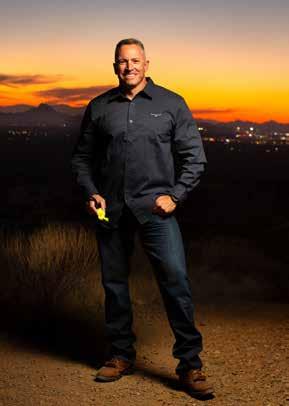
Understanding the science behind wildfire behavior reveals why defensible space works so effectively. Fire requires three elements to thrive: fuel, heat and oxygen — often called the fire triangle.
“By removing the fuel, the fire runs out of material to consume and eventually stops or dies out,” Gilleland explains. “Clearing flammable grasses, dead brush, and ‘understory’ — all the dead material that falls from trees and bushes, such as mesquite needles and leaves — prevents fire from traveling to your home.”
The concentric ring approach to defensible space allows homeowners to prioritize their efforts, starting with the most critical areas. Gilleland recommends beginning with the first 5 feet immediately surrounding your home, creating what fire experts call the “home ignition zone.” In this area, remove all flammable materials, including mulch, dead plants, dried leaves and firewood.
“These actions improve your home’s ignition resistance, reducing the chances of windblown embers finding a place to land in flammable material, smoldering and igniting a spot fire,” Gilleland says.
From there, work outward in expanding rings — 10 feet, 20 feet, 30 feet, and ideally 100 feet if your property allows. In these zones, the goal isn’t to create a barren landscape but rather to space plants appropriately, remove ladder fuels (vegetation that allows fire to climb from the ground to treetops) and maintain trees by removing lower branches.
For luxury homeowners concerned about maintaining aesthetic appeal, defensible space doesn’t require sacrificing landscape design. Strategic placement of hardscape features like decorative stone walls, patios and water features can serve as both firebreaks and design elements. Fire-resistant plants like ice plants, aloe, lavender and many native succulents can provide color and texture while minimizing risk.
“Defensible space doesn’t mean creating a moonscape or eliminating all vegetation,” Gilleland stresses. “The idea is to space out bushes, trim up trees, remove flammable material, and increase your home’s ignition resistance.”
This preparation creates an environment in which your home has a fighting chance, even without intervention.
“The ultimate goal is to be so prepared that your home survives with little or no fire department intervention,” Gilleland says.
While property protection is vital, personal safety remains paramount. Every family in fire-prone areas should develop a comprehensive evacuation plan before an emergency strikes.
“People living in these areas should have a comprehensive evacuation plan and a go bag ready at all times — essentially a kit containing all necessary supplies to sustain them for 72 hours away from home,” Gilleland advises.
The ideal go bag includes critical medications, personal hygiene items, copies of important documents (passports, insurance policies, birth certificates), nutritious snacks, water, clothing appropriate for the season and other essentials specific to your family’s needs. For families with pets, include food, carriers, medications and comfort items to reduce stress during evacuation.
Technology has made evacuation planning more sophisticated. Digital services allow families to store important documents securely in the cloud, accessible from any location. GPS mapping apps can help identify multiple evacuation routes from your neighborhood — an important consideration when primary routes may become congested or blocked.
Having a communication plan is equally important. Designate an out-of-area contact person who can serve as a central point of communication if family members become separated. Establish meeting locations both near your home for sudden evacuations and outside your neighborhood if immediate-area access is restricted.
In wildfire situations, information becomes a critical resource. Knowing where to find reliable updates can mean the difference between a proactive response and a dangerous delay.
“Fire information can be accessed through apps like Watch Duty or by following social media accounts for the Tonto National Forest, local fire departments or county emergency management offices,” Gilleland says.



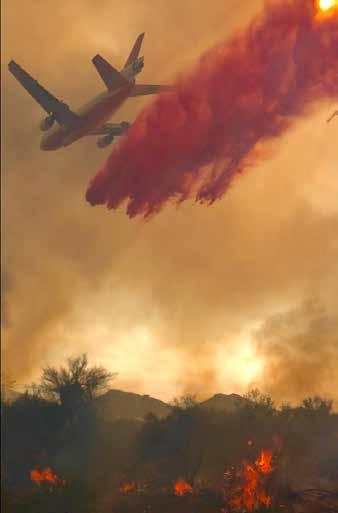

The Watch Duty app has become particularly valuable for Arizona residents, providing real-time wildfire information, evacuation updates and fire perimeter mapping. Many users appreciate the app’s straightforward interface and timely notifications.
Social media channels for the Tonto National Forest, Maricopa County Emergency Management and local fire departments provide another layer of information. These official accounts often share updates more quickly than traditional news outlets, though information should always be verified through multiple sources when possible.
“And understand that you don’t need to wait for an official evacuation order,” Gilleland emphasizes. “You always have the right to evacuate early and safely on your own terms. In fact, leaving before mandatory orders are issued often means avoiding traffic congestion and reducing stress during an already difficult situation.”
Individual preparation is vital, but community-level initiatives can amplify effectiveness. The Firewise program, highlighted in our March issue, continues to gain traction throughout Arizona.
“At the community level, the Firewise program remains our most effective initiative,” Gilleland says. “We recently helped two local communities — Rio Verde Foothills and Granite Mountain HOA, located within Rio Verde Foothills — become recognized by the state as Firewise communities.”
These community-based approaches include neighborhood cleanup events, shared resources for vegetation management and coordinated emergency response planning. Some neighborhoods establish communication networks using platforms such as WhatsApp or Nextdoor to share real-time information during emergencies.
For those living in luxury communities and homeowners associations, advocating for fire safety assessments and communitywide preparation can improve outcomes for all residents. Consider establishing a wildfire preparedness committee within your association to coordinate efforts, share resources and develop neighborhood-specific evacuation plans.
Local fire departments often provide resources for communitylevel preparation. Many offer property assessments, educational workshops and guidance for establishing Firewise communities — services worth exploring before emergency situations arise.
For luxury homeowners seeking additional protection, advanced strategies exist beyond basic preparation. High-end fire protection systems, such as exterior sprinklers that activate during emergencies, can significantly increase a home’s survivability. These systems, which can cost $10,000 to $30,000, depending on property size, may create a protective moisture barrier around the structure during approaching fires.
When building or remodeling, consider fire-resistant construction materials. Cement fiber siding, metal or tile roofing, tempered dual-pane windows and enclosed eaves all improve a home’s fire resistance. For larger estates, creating strategic firebreaks using amenities such as tennis courts, swimming pools or decorative water features can serve both aesthetic and protective purposes.
Documentation is another critical aspect of advanced preparation. Create a detailed home inventory with high-resolution photos or videos of valuable items, architectural features, landscaping and art collections. Store this information securely offsite or in cloud storage along with insurance policy information.
Speaking of insurance, review your policy annually to ensure adequate coverage for rebuilding costs, which often exceed market value. Consider specialized policies for high-value homes that include features such as guaranteed replacement cost coverage and temporary housing allowances that match your lifestyle.
While preparation is essential, prevention deserves equal attention. The vast majority of wildfires have human causes, making awareness and responsible behavior crucial.
“Perhaps most importantly, everyone should practice fire awareness,” Gilleland says. “Since the majority of wildfires are human-caused, simply preventing a fire before it starts will have the greatest impact on community safety.”
Taking responsibility for fire prevention means properly extinguishing campfires, avoiding outdoor burning during high-risk periods, maintaining vehicles to prevent sparks and reporting suspicious activity that could lead to fires, a sentiment echoed by state fire officials.
“It’s not a matter of if a fire starts, but when,” Chief Truett warns. “Be prepared and be proactive when it comes to fire. Do your due diligence when working outdoors with tools that may spark. Be a good steward of our lands and recreate responsibly.”
As wildfire season approaches, the time to prepare is now. By creating defensible space, developing evacuation plans, staying informed, engaging with community initiatives and exploring advanced protection strategies, Arizona homeowners can significantly improve their odds of weathering wildfire season safely.
The peace of mind that comes from proper preparation is invaluable — knowing you’ve done everything possible to protect your family and property allows you to enjoy Arizona’s beautiful landscape, even during challenging seasons. With thoughtful preparation and community cooperation, we can all face wildfire season with confidence rather than fear.
azfoothills911.org
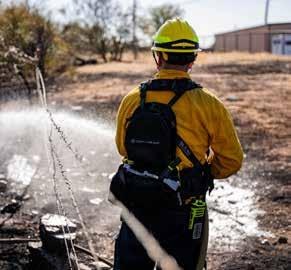

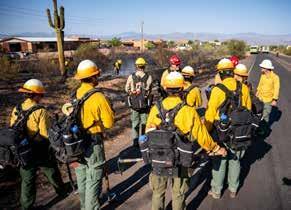
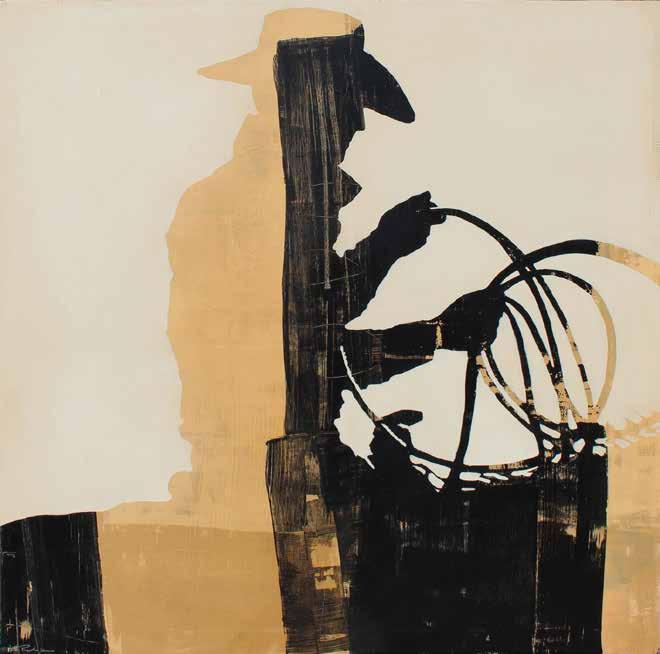
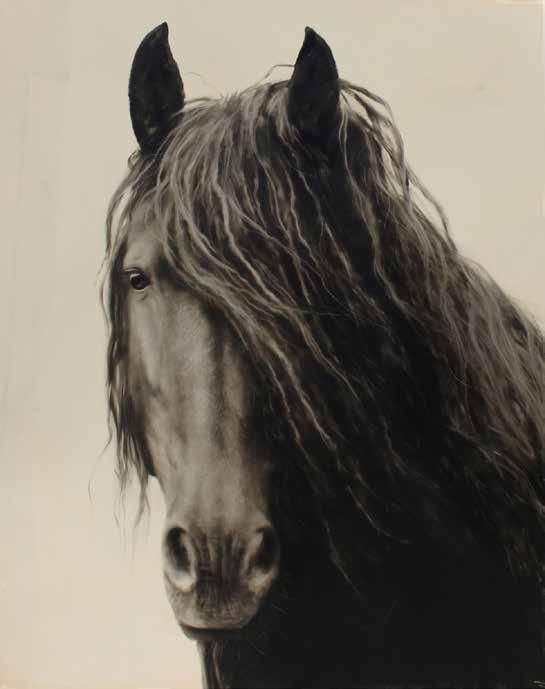
Writer Joseph J. Airdo

May 2–4
ARIZONA WINE COUNTRY ARTISTS’ VILLAGE
This curated art and fine-craft fair showcases premier state and regional artists in the heart of Old Town Cottonwood. Located within the Verde Valley American Viticultural Area, the event complements the area’s thriving wine culture with booths situated just steps from numerous tasting rooms, restaurants and galleries. Organized by Jerome-based artists John and Lauri Maeder, the quarterly event features artists selected through a rigorous process to ensure high-quality, original work across various mediums. Free admission. Friday–Saturday 10 a.m–6 p.m., Sunday 10 a.m.–5 p.m. Old Town Activity Park, 187 E. Pima St., Cottonwood. artists-village.com
‘JERSEY BOYS’
The Phoenix Theatre Company presents the Tony, Grammy and Olivier Award-winning musical about Frankie Valli and The Four Seasons’ rise from New Jersey obscurity to pop stardom. Features hits including “Sherry,” “Walk Like a Man” and “Can’t Take My Eyes Off You.” $59+. See website for showtimes. Hormel Theatre at The Phoenix Theatre Company, 1825 N. Central Ave., Phoenix. phoenixtheatre.com
PURGE YOUR PANTRY FOOD DRIVE
Foothills Food Bank and Resource Center launches its annual spring food collection campaign with a goal of 50,000 pounds in 50 days. The initiative encourages seasonal residents to donate nonperishable food, hygiene products and cleaning supplies before summer travel. Donations help stock shelves during traditionally slow donation months when many children lose access to school meals. Drop-off Monday–Friday 8 a.m.–2 p.m., Saturday 8 a.m.–10 a.m. Foothills Food Bank and Resource Center — Cave Creek, 6038 E. Hidden Valley Drive, Cave Creek. 480-488-1145; foothillsfoodbank.com
‘FORBIDDEN BROADWAY: THE NEXT GENERATION’
The Phoenix Theatre Company presents this satirical revue that playfully skewers Broadway’s biggest hits and theatrical conventions. The show features clever parodies, spot-on impersonations and witty commentary on the world of musical theater. $59+. See website for showtimes. Judith Hardes Theatre at The Phoenix Theatre Company, 1825 N. Central Ave., Phoenix. phoenixtheatre.com
‘ALL BALANCHINE’
Ballet Arizona presents three ballets by George Balanchine: “Walpurgisnacht,” “Scotch Symphony” and “Western Symphony.” The Phoenix Symphony provides live music for this celebration of the father of American ballet. See website for ticket prices and showtimes. Symphony Hall, 75 N. Second St., Phoenix. 602-381-1096; balletaz.org
KENTUCKY DERBY FUNDRAISER PARTY
The Holland Center hosts its annual Derby Day celebration featuring creative decor, red roses, a photo booth, mint juleps and an abundant buffet. Guests can watch the race on the big screen and participate in race day betting action. Traditional Kentucky Derby attire
is encouraged, with prizes for best hat and best-dressed couple. All proceeds benefit the center’s arts and education programming. $50. 2–5 p.m. The Holland Center, 34250 N. 60th St., Scottsdale. 480-488-1090; hollandcenter.org
May 4
CORVETTES AND COFFEE
Carefree Outdoor Living hosts a monthly gathering featuring more than 100 Corvettes spanning all generations, from classic C1s to modern C8s. The event is open to Corvettes only. Free. 8-10 a.m. Carefree Outdoor Living, 36889 N. Tom Darlington Drive, Carefree.
May 5
CULINARY BOOK CLUB: CINCO DE MAYO
This monthly gathering combines food and literature with a Cinco de Mayo theme. Participants discuss “I Am Not Your Perfect Mexican Daughter” by Erika L. Sanchez while sharing dishes prepared from Texas cookbooks. Bring your prepared dish, recipe copy and serving utensils. Free. Noon–2:30 p.m. Desert Foothills Library, 38443 N. School House Road, Cave Creek. 480-488-2286; dfla.org
May 8
LIBRARY BOOK CLUB
Desert Foothills Library hosts an open discussion of “The Heaven and Earth Grocery Store” by James McBride. Free. Registration required. 10 a.m.–noon. Desert Foothills Library, 38443 N. School House Road, Cave Creek. 480488-2286; dfla.org
May 9–10
CHAPTER 2 BOOKS’ MONTHLY SALE
The North Valley’s largest used bookstore offers discounted books, media and puzzles. Friday 9 a.m.–5 p.m. Saturday 10 a.m.–4 p.m. Chapter 2 Books at Desert Foothills Library, 38443 N. School House Road, Cave Creek. 480-488-2286; dfla.org
May 9–18
‘YOU’RE A GOOD MAN, CHARLIE BROWN’ Desert Foothills Theater presents this heartwarming musical based on Charles Schulz’s beloved “Peanuts” comic strip. See website for ticket prices and showtimes. May 9–11 at The Holland Center, 34250 N. 60th St., Scottsdale. May 16–18 at The Sanderson Lincoln Pavilion, 101 Easy St., Carefree. 480-488-1981; dftheater.org

Writer Joseph J. Airdo

24
INAUGURAL MAC & CHEESE FESTIVAL
Chase Field hosts its first-ever celebration dedicated to America’s favorite comfort food. This family-friendly event features gourmet mac and cheese creations from local restaurants, refreshing beverages, and live entertainment, including an acoustic set by actor and musician Thomas Ian Nicholas, known for his roles in “Rookie of the Year” and “American Pie.” $15+. 11 a.m.–4 p.m. Chase Field, 401 E. Jefferson St., Phoenix. ticketmaster.com
May 10 and 24
Jubilate Conservatory of Music presents two spring recitals showcasing students of all ages performing on strings, voice, percussion and winds. These performances offer parents and community members an opportunity to experience the conservatory’s comprehensive music education program firsthand. Free. 1–3 p.m. Desert Foothills Library, 38443 N. School House Road, Cave Creek. jubilateconservatoryofmusic.org
May 14–31
‘EROICA’
Ballet Arizona presents an outdoor performance at Desert Botanical Garden, choreographed by Ib Andersen to Beethoven’s music. This evolving ballet takes advantage of the natural desert landscape and sunset backdrop. See website for ticket prices. 8 p.m. Desert Botanical Garden, 1201 N. Galvin Parkway, Phoenix. 602-381-1096; balletaz.org
May 15
CAREFREE ART NIGHT
Local and regional artists showcase their work at participating galleries during this monthly celebration. Enjoy live music, refreshments, artist talks and demonstrations. Free. 4–7 p.m. See website for participating galleries and event map. visitcarefree.com/artnight
May 15
GET LIT BOOK CLUB
Desert Foothills Library’s happy hour book club discusses “Devil in the White City” by Erik Larson. Drinks and socializing at 5 p.m., discussion at 5:30 p.m. See website for restaurant location. Free. Registration required. 5-6:30 p.m. 480-488-2286; dfla.org
16–18
‘GRAND CANYON SUITE’
The Phoenix Symphony presents a celebration of Southwest landscapes in its final classical concert of the season. Conductor Thomas Wilkins leads the orchestra in Grofé’s cinematic “Grand Canyon Suite,” depicting five musical scenes of one of the seven natural wonders of the world. See website for ticket prices and showtimes. Symphony Hall, 75 N. Second St., Phoenix. 602-4951999; phoenixsymphony.org
May 16–18
MARICOPA COUNTY HOME & FLOWER SHOW
This expansive home improvement exhibition features more than 1,000 vendor booths showcasing the latest in home remodeling, decor, landscaping and outdoor living. Highlights include live floral installations, hands-on gardening workshops, landscaping consultations, and TikTok-inspired crafting demonstrations. The family-friendly event also offers children’s activities and entertainment, including live magic shows. $10; various discounts available. 10 a.m.–5 p.m. WestWorld of Scottsdale, 16601 N. Pima Road, Scottsdale. maricopacountyhomeshows.com
May 17–18
EXPERIENCE CUBA
The Musical Instrument Museum celebrates Cuban culture through interactive music workshops and live performances showcasing traditional rhythms and dance forms. The event features hands-on activities and educational exhibits highlighting the island’s rich musical heritage and global influence. $20; discounts available for youth and members. 9 a.m.–5 p.m. Musical Instrument Museum, 4725 E. Mayo Blvd., Phoenix. 480-478-6000; mim.org
May 18
‘LAUGHING WITH PROKOFIEV, STRAVINSKY & HAYDN’
MusicaNova Orchestra presents a concert exploring the humor in classical music through works by three renowned composers. See website for ticket prices. 6 p.m. Musical Instrument Museum, 4725 E. Mayo Blvd., Phoenix. musicanovaaz.org
May 20
BOOKS TO DIE FOR: MURDER MYSTERY BOOK CLUB
Desert Foothills Library’s mystery book club discusses “The Big Sleep” by Raymond Chandler. Light refreshments provided. Free. Registration required. 4-5 p.m. Desert Foothills Library, 38443 N. School House Road, Cave Creek. 480-4882286; dfla.org
May 20
‘JAMES MADISON’
The Holland Center presents a lecture on James Madison, widely regarded as the father of the U.S. Constitution. Historian Jim Sherbert explores how Madison overcame frail health and a quiet demeanor to become a commanding figure in American history, from his role in structuring the Constitution to forming the first American political party. Free; donations appreciated. 4 p.m. The Holland Center, 34250 N. 60th St., Scottsdale. 480488-1090; hollandcenter.org



Writer Joseph J. Airdo

The Arizona Restaurant Association this spring revealed the winners of its 11th annual Foodist Awards, recognizing outstanding achievements across Arizona’s culinary landscape. Notable winners include Poppy’s Office (Most Creative Handcrafted Cocktail Program), Course Restaurant (Exceptional Culinary Experience), Wren & Wolf (Standout Signature Dish for Beef Wellington), Bad Jimmy’s (Most Crave-Worthy Burger), Lon’s at the Hermosa Inn (Ultimate Patio Atmosphere), Uchi Scottsdale (Top Sushi Restaurant), and Chef Ivan Gonzalez of Wren & Wolf (Top Chef). Legendary restaurateur Chris Bianco received the prestigious Food Pioneer Award, honoring his lifetime of culinary excellence. foodistawards.com
May 21–July 13
‘INTO THE WOODS’
The Phoenix Theatre Company presents this Tony Awardwinning musical that weaves together beloved fairy tales with unexpected consequences. $59+. See website for showtimes. Hormel Theatre at The Phoenix Theatre Company, 1825 N. Central Ave., Phoenix. 602-254-2151; phoenixtheatre.com
May 24
TOY BARN CARS & COFFEE
The Toy Barn hosts a monthly gathering featuring luxury and exotic cars, complemented by gourmet refreshments and facility tours. Free. 7–10 a.m. The Toy Barn, 4504 E. Lone Mountain Road, Cave Creek. toybarnstorage.com
May 26
Join the Carefree community as it gathers for the annual Memorial Day ceremony. The event will include the presentation of colors, an invocation and keynote addresses to honor and remember the servicemen and women who died while serving our nation and those who remain missing in action. Free. 8 a.m. Cave Creek Memorial Cemetery, 36400 N. Pima Road, Carefree. carefree.org
June 2
CULINARY BOOK CLUB: JULIA CHILD
Join food and literature enthusiasts for a celebration of Julia Child. Participants discuss “The Secret War of Julia Child” by Diana R. Chambers while sharing dishes prepared from Child’s cookbooks. Bring your prepared dish, recipe copy and serving utensils. Free. Noon–2:30 p.m. Desert Foothills Library, 38443 N. School House Road, Cave Creek. 480-488-2286; dfla.org
One of Arizona’s most historic establishments welcomes new co-owners Jim “Z” and Kris Ziebart of Carefree, who join Danny and Meri Piacquadio in continuing the 90-year legacy of this iconic country western venue. Longtime co-owners Bill and Marie Vale have passed the torch after 21 years of leadership. The restaurant has introduced several new menu items including fried pickles, loaded totchos, and Grandma P’s pizza, with plans to expand live entertainment offerings. Open daily for breakfast, lunch and dinner. Harold’s Corral, 6895 E. Cave Creek Road, Cave Creek. 480-488-1906; haroldscorral.com
PP e r s o n a l i z e d a n d D o c t o r -
S u p e r v i s e d W e i g h t L o s s
The Center for Integrative Healing & Wellness’ medical weight loss program integrates FDA-approved medications with a natural and holistic approach to address the underlying biological and physical issues responsible for weight gain
In addition to losing weight and keeping it off, The Center for Integrative Healing & Wellness’ medical weight loss program provides clients with the tools they need to reduce the risk of coronary artery disease, stroke and type 2 diabetes as well as optimize hormones for energy, health and longevity.
T h e M o s t C o m p r e h e n s i v e &
S u c c e s s f u l P r o g r a m A v a i l a b l e
The Center for Integrative Healing & Wellness’ medical weight loss program is designed to help clients be the healthiest they have ever been, in the best body that they have ever had
Regardless of the amount of weight you want to lose, the spa-like clinic’s Integrative Team will monitor and guide you throughout the process of reaching your goal. Our clients typically lose 15–20% or more of their body weight an average of 53 pounds in 6–12 months.


Best of all, the program ensures that patients maintain lean muscle mass and keep the weight they lost off for life. That is because, unlike other programs, our weight loss program looks not only at scale weight but also takes into consideration body fat, muscle mass and water weight, which all affect one’s ultimate goal
H o r m o n e T e s t i n g N u t r i t i o n a l & F i t n e s

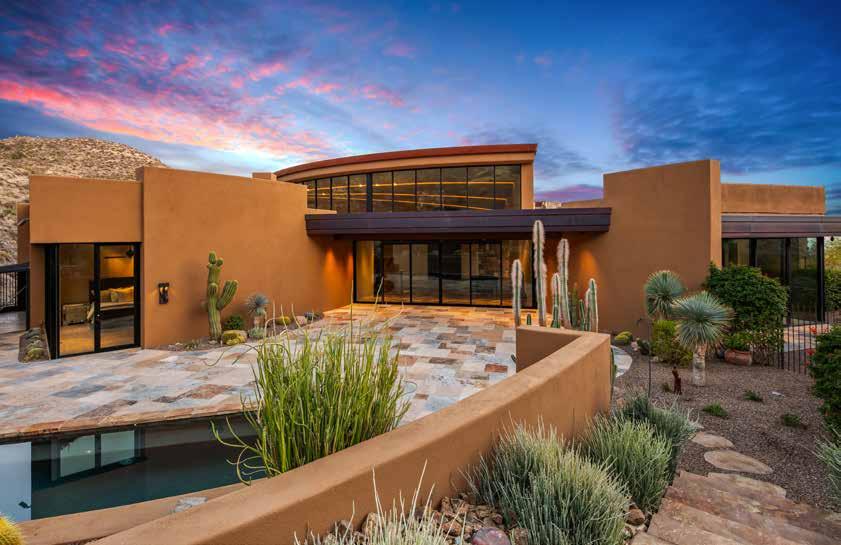

EExperience unparalleled seclusion in this extraordinary 7,330-square-foot masterpiece nestled within 270 acres of pristine Tonto National Forest. This architectural marvel, built in 2017, offers the ultimate private retreat where access is granted only to invited guests, ensuring absolute exclusivity in one of Desert Mountain’s most coveted locations.
This magnificent 5-bedroom, 6.5-bath estate welcomes you with breathtaking 30-foot-tall glass windows that perfectly frame stunning forested mountain views. The architects have masterfully designed every corner of this single-level home to capture spectacular panoramas, creating a seamless connection between interior luxury and the natural beauty beyond.
At the heart of the residence stand two custom-designed steel fireplaces stretching dramatically from floor to ceiling, creating a striking focal point that anchors the expansive living space. A grand bar, crafted from the same exquisite materials as the fireplaces, doors and windows, adds an elegant touch to the sophisticated open-concept design.
The kitchen is a culinary masterpiece with premium gas appliances, wall ovens and a walk-in pantry. The split master bedroom features two luxurious bathrooms with separate showers, double sinks and a soothing soaking tub that overlooks the spectacular natural desert for ultimate relaxation.
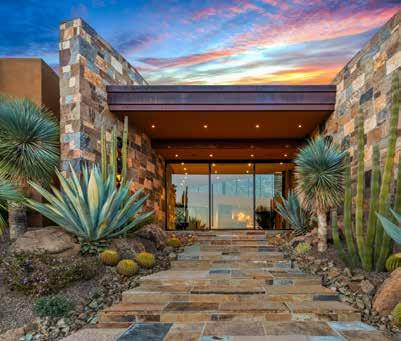


Residents enjoy Desert Mountain’s exceptional amenities including clubhouse access, tennis courts, heated pools and spas, pickleball courts, a state-of-the-art fitness center, and with this property, the opportunity to secure a coveted golf membership. With 13.6 acres of surrounding land, this property guarantees privacy and natural beauty for years to come.
This extraordinary desert sanctuary represents a once-in-a-lifetime opportunity to own one of the most distinctive and private estates in all of Desert Mountain. Call Karen today to schedule your exclusive viewing of this unparalleled Desert Mountain estate.

Certified International Property Specialist
Luxury Real Estate Specialist
480-694-0098
karen@desertmountainaz.com
desertmountainaz.com
8711 E. Pinnacle Peak Road, Suite D103
Scottsdale, AZ 85255
License #SA104221000
With more than 25 years of experience in Desert Mountain real estate since 1995, Karen Baldwin brings unparalleled expertise to luxury property transactions. Her background in custom home design, including two Golden Nugget awardwinning projects, provides clients with invaluable insights into architectural quality and design potential. As a Certified International Property Specialist and longtime Desert Mountain resident, Karen offers intimate knowledge of the community’s history, club operations and design review process. Her consistent ranking among top sales executives reflects her dedication to matching discerning clients with their perfect desert home.

A hushed theater fills with a sound that seems impossible from a single guitar. Standing alone on stage, Bill Dutcher’s fingers dance across his instrument, coaxing out basslines, percussion, melody and harmony simultaneously. The audience watches in disbelief as one man creates what sounds like an entire ensemble.
“Every show sends listeners away saying, ‘How can one guy and one guitar do this?’” Dutcher says with a modest smile that belies his four decades of mastering this musical sleight of hand.
For 12 years, Dutcher has been answering that question through his “Extreme Acoustic” concert series at the Musical Instrument Museum. The acclaimed guitarist has built a reputation as not just a performer but a curator of Arizona’s acoustic guitar talent, creating a showcase that has become a cornerstone of the Valley’s musical landscape.

The series follows a simple yet powerful formula: three acoustic guitarists, each with a distinct style, performing individual sets before joining forces for a collaborative finale. The result is an evening that highlights the versatility and emotional range of the acoustic guitar in its many forms.
“Over the years, I’ve been able to showcase some of Arizona’s best acoustic guitar performers, and the variety has been absolutely amazing,” says Dutcher, who grew up in Dublin, Ohio, where his musical journey began on an accordion.
His journey to Arizona, however, began with a vacation in 1995, shortly after he married his wife.
“We came out to visit one of her uncles and immediately fell in love with the environment and vibe,” Dutcher recalls. “As a professional, full-time performer, I had pretty much hit the ceiling back in Ohio in terms of performance opportunities.”
Upon arriving in Arizona, Dutcher wasted no time establishing himself in the local scene, playing every open mic he could find — including at Cave Creek Coffee Company, where he was offered a sevenyear residency.
I love to push the envelope every night, trying to draw in all that is around me and channel that energy through my heart and hands to the audience’s ears. Bill Dutcher “

Explore Bill Dutcher’s acoustic guitar artistry by scanning this QR code with your phone to access his complete discography on Spotify.

What sets Dutcher apart is his mastery of multiple instruments. Beyond six-string guitars, he performs on 12-strings, Weissenborn Hawaiian guitars and, perhaps most distinctively, the harp guitar — an unusual instrument with additional unfretted bass strings that extend beyond the guitar’s neck.
“I’ve always been fascinated with stringed instruments,” he says. “I remember seeing a picture of a harp guitar and was completely mesmerized. I found the blueprints on the internet and took them to a guitar maker in Columbus, Ohio, named J. Thomas Davis, who built a custom harp guitar for me.”
The harp guitar allows Dutcher to create basslines and melodies simultaneously, expanding the compositional possibilities beyond a standard guitar.
“While I play a multitude of string instruments, I would have to say the harp guitar speaks to my soul the most,” he admits.
Dutcher’s versatility extends to his multiple musical projects. Beyond his solo performances, he’s a guitarist with The Local Spirits, an instrumental ensemble, performs classic rock covers with Audio Farm, and still reunites with his college band, The Crunch, which has been together for more than 35 years.
“I tend to burn the candle at both ends all the time,” Dutcher says. “I jokingly told a friend that my brain works like a computer hard drive. After every musical session, I need to wipe the hard drive clean and reinstall the operating system for the next type of music!”


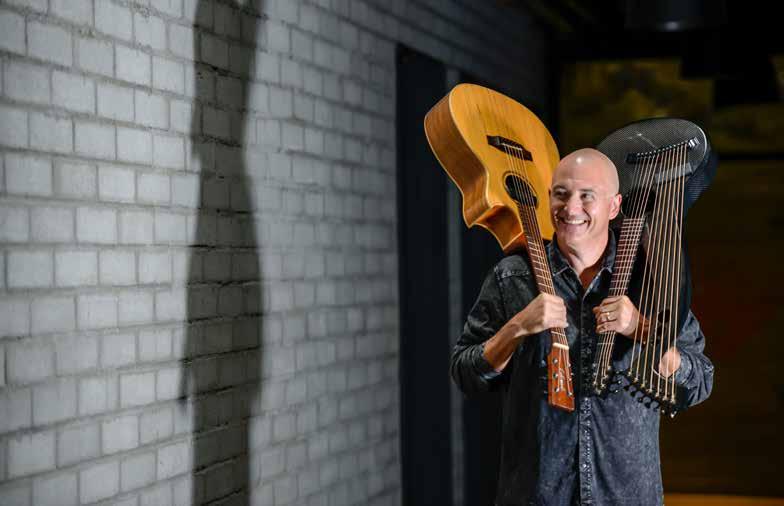
The harp guitar “speaks to my soul the most,” says Bill Dutcher of his instrument collection.
Each project offers Dutcher a different creative outlet. The Local Spirits has reinvigorated his compositional drive after what he describes as a long-standing creative slump.
“I’ve come to the realization that while I struggle to write lyrical content for songs, I can create melodic acoustic guitar instrumental music all day long,” he explains. “I’ve had to focus on that strong suit, and I just keep generating new ideas, which makes me very happy.”
Perhaps his most meaningful collaboration, though, is with his 27-year-old son, Austin, an accomplished guitarist in his own right.
“We play fingerstyle duets and singer-songwriter material together at our monthly residency on the third Tuesday at Janey’s in Cave Creek,” Dutcher says. “I’m extremely proud and grateful to play music with my son. I have to pinch myself every time we’re performing together.”
While his father-son collaboration fulfills a personal passion, Dutcher’s “Extreme Acoustic” series serves a broader purpose, creating a catalog of treasured musical moments for Arizona’s guitar community that has grown more poignant with time. The upcoming show set for June 4 will showcase a fresh trio of distinctive guitar styles.
“For this next concert at MIM, the format will feature three solo acoustic performers: myself, Andy Paul and Jim Resnick,” Dutcher explains. “Andy is a fiery fingerstyle player in the traditions of Chet Atkins, Merle Travis and Jerry Reed. Jim is a phenomenal jazz player. Our three distinct styles will provide a cornucopia of different musical approaches for the audience’s enjoyment.”
The series continues to evolve, with Dutcher already planning its future direction.
“My focus with future shows is to not only continue bringing in seasoned veterans but also to introduce some of the upcoming younger performers who are making a splash on the scene,” he says. “It’s important to showcase both established talent and the next generation of acoustic guitarists who are pushing boundaries in our state.”
As both performer and educator, Dutcher offers hardearned wisdom to aspiring guitarists.
“Put in the time and really practice,” he advises. “We live in this age of television talent shows where you hear teenage kids say, ‘I’ve been waiting my whole life for this moment.’ This notion of instant gratification based on minimal work doesn’t really hold water.”
Despite decades in the industry, Dutcher’s passion for his craft remains undiminished. When asked about his proudest accomplishment, he emphasizes the journey rather than any specific achievement.
“I never really thought about getting into music to be a superstar or a multimillionaire,” he says. “I played the guitar because it makes me happy. Everything in my musical life has manifested because I’ve held onto this love and passion for the instrument.”
For Dutcher, music is fundamentally about connection — with his instruments, with fellow musicians and, most importantly, with his audience.
“I feel fortunate and blessed to make other people smile and feel happy when they see me play,” he says. “I’ve always believed that we musicians are stewards, and our duty is to share our talent with others. If I can help a crowd forget about their worries for a couple of hours when they see me perform, then I’ve accomplished my job.”
billdutcher.com

June 4 // 7:30 p.m.
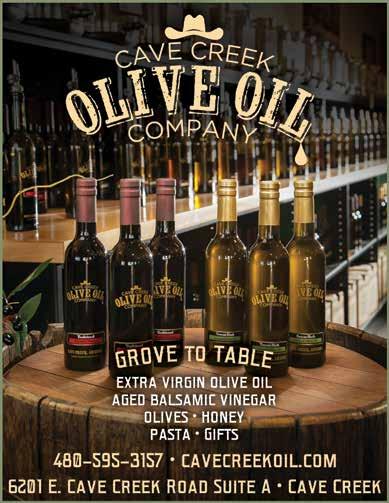
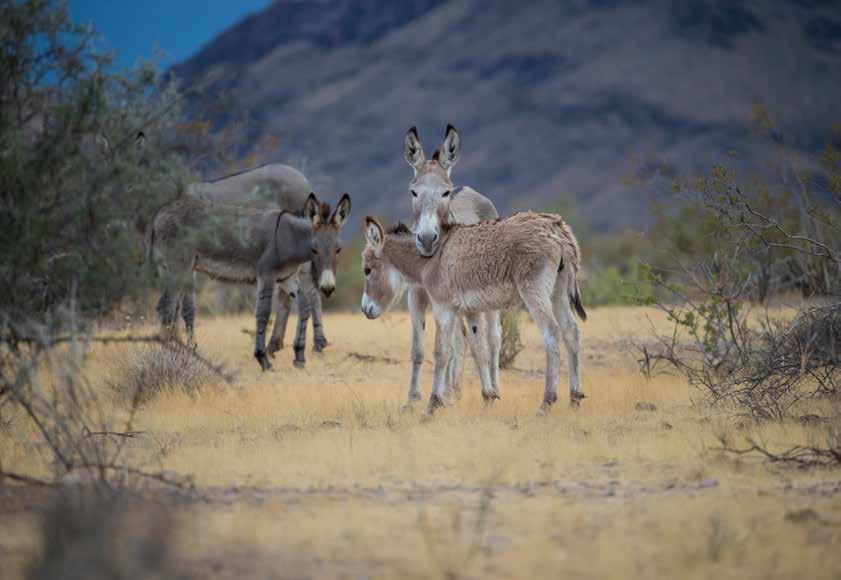
TThe sight is becoming increasingly familiar to North Valley residents: Wild burros wandering through neighborhoods, grazing on manicured lawns and occasionally wandering into roadways. While these federally protected animals have long been iconic symbols of the American Southwest, their increasing presence in residential areas presents complex challenges for natural resource managers, residents and the burros themselves.
“There are many factors contributing to burros migrating into communities,” explains Dolores A. Garcia, public affairs specialist for the Bureau of Land Management’s Arizona State Office. “One is the ever-expanding community boundaries or urban sprawl. Another primary factor is drought conditions, which limit the availability of water and food sources in the desert.”

Garcia notes that overpopulation compounds these issues, creating increased competition for already limited resources.
“As a result, burros move into areas where resources are more abundant, such as communities with lush green landscapes,” she says.
The Bureau of Land Management is tasked with maintaining these wild burro populations in accordance with the Wild and Free-Roaming Horse and Burro Act of 1971, which requires the agency to manage burros in “a thriving natural ecological balance” with their environment. This mandate creates a delicate balancing act between conservation requirements, animal welfare concerns and public safety.
When burros venture into developed areas, they create potential hazards for motorists and face dangers themselves. These situations require strategic intervention.
Do:
• Observe from a safe distance
• Drive cautiously in areas with burro crossing signs
• Report injured burros to BLM (800-637-9152)
• Yield to burros on hiking trails
Don't:
• Feed wild burros
• Approach or try to pet burros
• Assume a baby burro is abandoned
• Block burros’ access to water sources
• Stop on roadways to photograph burros

“The BLM addresses overpopulation issues and concerns for both public and burro safety by coordinating gathers,” Garcia explains. “All BLM gather operations must follow our comprehensive animal welfare standards to ensure animal health and safety throughout the process.”
The agency planned a gather for mid-April 2025 in north Phoenix, including the New River and Anthem communities, with a goal of collecting 400 burros. As of this issue’s press deadline, the operation had not yet concluded. The BLM uses the bait trap method, which involves placing small, temporary pens with food and water as bait. When burros enter, gates automatically close behind them.
“After collection, the animals are transported to our off-range corrals and holding facility in Florence, where they receive veterinary examinations before entering our private care and placement program,” Garcia says. “BLM Arizona has achieved a 100% success rate in placing all burros gathered from the range into private care.”
The agency doesn’t work alone in these efforts. Private organizations play a crucial role in the broader management strategy.
“The BLM recognizes and appreciates the efforts of private organizations that support wild horse and burro adoptions, training and education,” Garcia notes. “These organizations help save taxpayer funds by reducing the costs associated with caring for unadopted wild horses and burros.”
Those cost savings are significant. Based on 2024 figures, it costs approximately $15,000 to care for a single wild horse or burro in BLM facilities over its lifetime if it is not placed into private care.
Looking ahead, the BLM is developing a comprehensive population control plan for larger-scale gathers to address the broader overpopulation issue within the Lake Pleasant Herd Management Area. The agency is also taking proactive measures to prevent dangerous encounters between burros and vehicles.
“We’re collaborating with partners like the Arizona Department of Transportation and local municipalities to improve fencing that keeps burros away from busy roadways and to increase signage alerting drivers about potential burro crossings,” Garcia says.
For residents encountering wild burros, safety should be the primary concern. These undomesticated animals, while appearing docile, can be dangerous. Experts advise maintaining a respectful distance, never feeding them and reporting their presence to the appropriate authorities rather than attempting to handle them personally.
With thoughtful management and community cooperation, both Arizona’s wild burros and its human residents can safely coexist in this shared desert landscape.
blm.gov/whb
Early Arrivals (1500s): Spanish explorers introduced burros to the Americas during their expeditions. Some of these animals escaped or were released into the wild.
Mining Boom (1800s): The gold and silver rush brought thousands more burros to Arizona. Miners used them as pack animals because of their surefootedness and ability to survive in harsh desert conditions.
Post-Mining Era (Early 1900s): As mining operations declined, many burros were abandoned and joined feral populations, establishing themselves throughout Arizona’s desert landscapes.
Legal Protection (1971): Congress passed the Wild and Free-Roaming Horses and Burros Act, designating these animals as “living symbols of the historic and pioneer spirit of the West” and providing federal protection.
Modern Management (Present): Today, the BLM manages approximately 6,900 wild burros across Arizona’s herd management areas, balancing ecological concerns with the animals’ protected status.



FFrom serenading patrons at Elevate Coffee Company at age 12 to smashing trucks with baseball bats alongside Carrie Underwood on “American Idol,” Sophia Humbert’s musical journey is a testament to authentic talent and hometown determination.
The 22-year-old Anthem native, who earned her golden ticket to Hollywood in the show’s March 23 episode, has been steadily building her musical career for a decade, performing at venues throughout the North Valley while cultivating a sound that defies easy categorization.
“I think music was always inside me,” Humbert says. “That might sound cliché, but it’s true — especially since my parents aren’t musical at all. Growing up, I wasn’t really around music except for what played on the radio. I didn’t have any strong musical influences in my life.”
Her musical awakening came at summer camp when she was about 9 years old, coinciding with the peak of Adele’s “Rolling in the Deep.” The song sparked something profound in young Sophia.
“What
fascinates me is how I can take something deeply personal that I’ve lived through, and when I share it through music, other people relate to it. That’s the magic of storytelling — taking something meaningful from your own life and expressing it in a way that lets others see themselves in your experience.
Sophia Humbert

“One day, that song came on in the car, and something just clicked inside me,” Humbert recalls. “I had this overwhelming feeling that I needed to sing that song. The emotion it stirred in me was so powerful, I wanted to experience what it felt like to perform it myself.”
Her parents, Trent and Vernaliza Humbert, were completely taken aback when their daughter announced her intention to perform at the camp talent show. Until that moment, they had no inkling of her musical inclinations or abilities.
“When they asked to hear me sing, I agreed, but I was so nervous I had to go into another room and face the corner,” she says. “I played the karaoke track and somehow managed to sing the whole song from memory. When I finished, they were stunned.”
That pivotal moment set her on a path that would define her future. Her supportive parents immediately offered guitar or singing lessons, recognizing that this wasn’t just a passing phase but a genuine passion.
By age 12, Humbert was already booking professional gigs at Elevate Coffee Company in North Phoenix, where her first audition became a regular performance slot. From those early coffee shop performances, her repertoire of venues expanded throughout the North Valley. During high school, she maintained a standing weekly gig at True Burger in Anthem, playing every Monday night.
The Cave Creek music scene proved particularly formative in her development as a musician.
“Landing gigs at Janey’s Coffee Co. and Bodega in Cave Creek was particularly significant because it was known for having live music daily and required formal auditions,” Humbert says. “I performed there regularly while in high school along with shows at Raven’s View and The Grotto Cafe. Those venues were instrumental in my early career development.”
After graduating from Boulder Creek High School in 2020, Humbert made a pivotal decision that would further refine her artistic direction. Initially planning to major in business at Arizona State University, with music as a side pursuit, a last-minute discovery changed her trajectory.
“Near the end of my senior year in high school, my mom suggested we take one final look at the list of majors, thinking there might be something that aligned better with my passion for music,” Humbert explains. “That’s when we discovered this program we’d never seen before.”
The program was ASU’s new popular music program, launching its inaugural year just as Humbert would be starting as a freshman.
“Making that last-minute switch turned out to be one of the best decisions of my life,” she says. “Beyond the incredible friendships I formed — relationships I know will last forever
Scan this QR code with your phone to stream Sophia Humbert’s music on Spotify and follow her artistic journey as she releases new original tracks in 2025.



Scan this QR code with your phone to see Sophia Humbert on American Idol.
— the program opened up whole new worlds for me. I discovered my love for songwriting through a required first-year course, learned the complexities of music production and gained mentors who continue to guide me even after graduation.”
Throughout college, Humbert continued performing gigs to support herself, expanding her reach to venues in Phoenix and Scottsdale as she established herself in her new home in downtown Phoenix.
As a multi-instrumentalist who plays guitar and piano and sings, Humbert finds her artistic connection shifts between instruments depending on her creative mood.
“I find myself going through phases where I connect more deeply with one instrument over the other — sometimes I’m drawn to guitar, other times to piano,” she says. “While I have equal love for both instruments, guitar holds a special place in my heart since it was my first experience combining instrumental playing with singing. But honestly, I couldn’t choose between them — they’re both fundamental to who I am as a musician.”
Her “American Idol” journey began not with a lifelong dream of competing on the show but rather through an unexpected digital connection. After building a following of about 80,000 on TikTok, where she shared cover songs and hosted live singing sessions, an “American Idol” casting producer discovered her content.
“It was completely unexpected,” Humbert says. “One day, an ‘American Idol’ casting producer reached out, saying ‘Hey, I’d love to talk to you about the new season.’ I took the call thinking, ‘Why not? Let’s see where this goes.’”
What followed was a six-month process of multiple audition rounds before she ever stood in front of the celebrity judges.
“The process began last August, and I had to go through several rounds of Zoom auditions — first with the casting producer, then with the executive producers,” she explains. “Finally, in December, they told me I’d be performing for the judges. That was the audition everyone saw on TV.”








The surreal experience culminated in her televised audition, where she performed Carrie Underwood’s “Before He Cheats” for the judges, including Underwood herself.
“It didn’t fully hit me until I was standing in that room in front of the judges,” Humbert recalls. “That’s when I thought, ‘Whoa, I hope my muscle memory kicks in because I am so nervous.’ So yeah, it was definitely a roller coaster, but in the best possible way.”
Her unique arrangement of the song — a stripped-down, piano-led rendition — showcased her vocal talent but initially lacked the fiery energy the judges were seeking. This led to one of the season’s most memorable moments, when the judges took Humbert to a quarry where she was handed a baseball bat and safety goggles to destroy a truck while singing the angry anthem.
“I had no idea they were taking me out there, so my reactions were completely genuine,” she says. “When they first had me hit the truck, I didn’t fully understand they wanted me to actually strike it. I was really hesitant — I mean, you don’t normally take a bat to a random nice-looking truck that’s just sitting there.”
The experience eventually loosened her up, culminating in a golden ticket to Hollywood Week. Though her “American Idol” journey ended there, the national exposure has already opened new doors.
“The kind of exposure you get from a show like ‘American Idol’ is something you just can’t create on your own,” Humbert says. “The whole experience has been incredible — I’ve gained new followers, received messages about my songs on Spotify and connected with fans who discovered me just from seeing me perform on TV.”
Throughout her evolving career, Humbert has remained steadfast in her commitment to musical authenticity. As a songwriter, she gravitates toward personal storytelling that resonates with universal emotions.
“To me, storytelling connects us through shared human experiences,” she explains. “We all face similar emotional journeys — heartbreak, love, confusion, feeling lost, growing up — but we each walk those paths in our own unique way.”
This philosophy extends to her performance style as well.
“What fascinates me is how I can take something deeply personal that I’ve lived through, and when I share it through music, other people relate to it,” Humbert says. “They might not have experienced exactly what I did, but they recognize those universal feelings and emotions. That’s the magic of storytelling — taking something meaningful from your own life and expressing it in a way that lets others see themselves in your experience.”
With original music releases planned for 2025 and a growing national profile, Humbert remains grounded in the values and community that shaped her. Beyond her musical pursuits, she enjoys exploring local coffee shops (Songbird Coffee and Tea House is a favorite), reading and spending time with friends and family.
As she reflects on her journey from that nervous 9-year-old singing with her back to her parents to performing on national television, Humbert credits her hometown with providing the foundation for both her personal and artistic development.
“Anthem was such a great place to grow up in. I’m forever grateful for that,” she says. “Growing up in that environment gave me the security to express myself creatively. It really shaped who I became — from the school I attended to the friends I made.
“Anthem laid the foundation for who I am as a person, and since artistry is so deeply personal, the two are completely intertwined. The community molded me first as an individual, and from that emerged the artist.”
sophiahumbert.com



Writer Joseph J. Airdo // Photography by Bruce D. Taubert
IIn the ephemeral flutter of a butterfly’s wings lies an entire universe of artistry invisible to the naked eye. Delicate, intricate and astonishingly complex, these living canvases reveal their secrets only through the magnifying lens of macro photography — and the patient eye of a scientist-artist like Bruce D. Taubert.
“When I began, I wasn’t aware of the intricacies of moth and butterfly wing patterns,” says Taubert, whose dramatic closeup images capture the hidden architecture of these remarkable structures. “I love my images that show the veins and scales in their wings. The veins provide structural strength, while the scales are waterproof and necessary for flight.”
Each photograph in this collection represents not just a moment captured but hours of meticulous technical work using specialized equipment more commonly found in scientific laboratories than photography studios. The results offer a rare glimpse into a miniature world where form meets function in spectacular fashion.
“The variety of patterns is exciting — from interweaving to overlapping to very fuzzy scale patterns,” Taubert explains. “Each moth or butterfly seems to have found a unique way of structuring the same basic materials.”
Arizona’s diverse ecosystems — from the high alpine forests near Flagstaff to the Sonoran Desert — support a remarkable variety of Lepidoptera, each species evolving distinctive wing characteristics. Among them, Taubert has his favorites.
“The great blue hairstreak is probably my favorite butterfly, if I had to choose one,” he shares. “The striking iridescent blue wings against the black background are quite eye-catching.”
The differences between butterfly and moth wings become strikingly apparent through Taubert’s lens.
“Butterflies typically have more defined scales arranged in distinct patterns, while moths tend to have longer scales laid down in a more overlapping fashion,” he notes. “If you’ve ever handled a moth, you’ve probably noticed how easily their scales come off — almost like dust on your fingers. Butterfly scales, in my experience, don’t detach quite as readily.”
These images invite us to look more closely at the commonplace wonders that surround us, particularly during spring when butterflies emerge in abundance across Arizona’s landscapes.
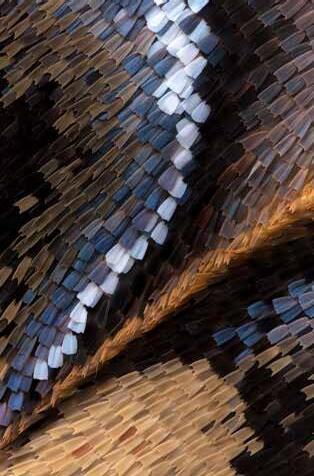
Calleta Silk Moth (Eupackardia calleta)
The intricate architecture of this moth’s wing scales creates both structural support and the vibrant coloration that characterizes this impressive silk moth native to Arizona’s Sonoran Desert region.
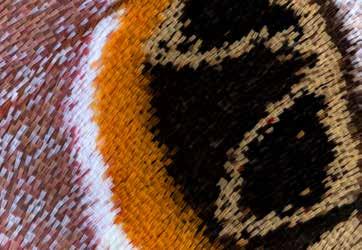
Glover’s Silk Moth (Hyalophora
Each scale on this magnificent moth’s wing functions as both a pigment carrier and a microscopic airfoil, contributing to the silent flight that silk moths depend on for evading predatory bats.
Arizona’s moth species outnumber butterflies by a remarkable 10-to-1 ratio, with thousands of varieties ranging from barely visible micro-moths to impressive specimens with 5-inch wingspans.

Queen Butterfly (Danaus gilippus)
This resilient monarch relative thrives year-round in Arizona’s desert landscapes, where many other butterfly species cannot survive the extreme conditions.

The queen butterfly (Danaus gilippus) — a resilient cousin of the famous monarch — thrives year-round in Arizona’s desert landscapes, where other butterflies cannot survive.

Great Blue Hairstreak (Atlides halesus)
Bruce D. Taubert’s favorite butterfly displays iridescent scales that act like microscopic prisms, scattering light to produce the brilliant blue that shifts with viewing angle.

Monarch (Danaus plexippus)
These specialized scales contain cardenolide compounds absorbed from milkweed during the larval stage, making the wing tissue toxic to potential predators.
Arizona’s largest butterfly showcases intricately arranged black scales interspersed with yellow pigmentation, demonstrating nature’s precision in creating bold warning patterns.

“
Unlike their butterfly cousins, many Arizona moth species possess specialized sound-absorbing scales on their wings — an evolutionary adaptation that renders them virtually invisible to bat echolocation.


Painted Lady (Vanessa cardui) One of the world’s most widespread butterflies, this species migrates through Arizona seasonally. Its complex pattern helps to regulate body temperature in environments ranging from desert to alpine.

With a Ph.D. in wildlife management and decades of experience as a conservation biologist, Bruce D. Taubert approaches his subjects with both scientific precision and artistic vision. His extreme macro photography of butterfly and moth wings employs techniques that bridge the gap between laboratory science and fine art.
“When capturing my super-close-up images of wing structures, I use equipment similar to what you’d find in a microscope lab,” he says.
The process is painstaking, involving specialized macro lenses capable of 1x to 20x magnification, precise lighting setups, and an automated focusing rail that moves the camera in minute increments.
“For each specimen, I capture anywhere from 20 to 200 images at slightly different focal distances, then combine them using what’s called focus stacking software,” Taubert describes. “This creates a single image with depth of field impossible to achieve in a single shot. It’s an incredibly tedious process requiring patience and precision, but I’m driven by the beautiful results that reveal details invisible to the naked eye.”
Taubert’s global travels have taken him from the cloud forests of Panama to the African savanna, yet he maintains a special appreciation for his home state.
“Arizona ranks as the third-most biodiverse state in the United States. We have more plant and animal species than 46 of our sister states,” he notes with pride. “Our sky islands offer unique and isolated ecosystems where species found nowhere else in the world have evolved.”
His insatiable curiosity drives both his scientific and photographic pursuits.
“I have a driving need to discover more about animal biology,” he explains. “Photography gives me the opportunity to not only get up close and personal with wildlife, but it forces me to study my subjects so I can capture images that highlight meaningful behaviors.”
His work spans diverse subjects, from the microscopic to the magnificent. Throughout his career, Taubert has contributed to numerous scientific publications while creating images that have resonated with broader audiences in National Geographic, Science, Arizona Highways and Arizona Wildlife Views
“As a biologist, my goal is to learn as much as possible about wildlife so I can contribute to conservation efforts,” he reflects. “I believe that sharing compelling wildlife images with the public fosters greater appreciation for these creatures and, ultimately, motivates people to protect our most cherished natural resources.”
brucetaubert.smugmug.com
OOn Monday, May 26, as the morning sun rises over Cave Creek Memorial Cemetery, community members will gather to honor those who made the ultimate sacrifice in defense of our nation. The annual Memorial Day tribute, beginning at 8 a.m., will bring together neighbors, veterans, students and Scout troops in a solemn ceremony featuring speeches by military veterans and patriotic songs.
“Memorial Day reminds us of the profound price of freedom and the deep debt of gratitude we owe to those who made the ultimate sacrifice,” says Carefree Mayor John Crane. “It is a time to reflect on their courage and honor their memory with heartfelt appreciation.”
But for an increasing number of visitors, Memorial Day carries a more expansive meaning — honoring not only those who fell in battle but also the thousands of veterans who returned home only to lose their lives to the invisible wounds of war.
In Arizona, where the veteran suicide rate stands at 51.2 per 100,000 people — significantly higher than the national rate of 34.7 — advocates are leading efforts to recognize what many call the “hidden casualties” of military service.
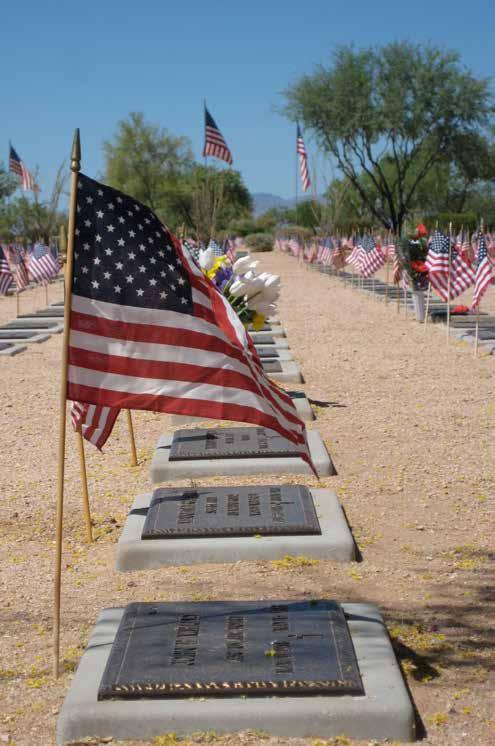
Writer Joseph J. Airdo
Veterans suffering from suicidal ideation and PTSD deserve to have their struggles acknowledged. When they unfortunately lose their battle within, those numbers should be counted as casualties of the military service or campaign they fought in. Michael Tapp

“When the operation ends, the battle doesn’t necessarily end,” says Michael Tapp, president of Daisy Mountain Veterans in Anthem and a military retiree who works to connect veterans with mental health resources through the Service Resiliency Unit of Acadia Healthcare.
“The difference between Memorial Day and Veterans Day is that Memorial Day is designed to honor those who lost their lives in service to the country. Those who came back from active-duty service and still lost their lives as a result of it are equally deserving of that remembrance as those who suffered physical wounds that took their lives.”
As communities prepare for Memorial Day observances, advocates are pushing for wider recognition that the toll of military service extends far beyond the battlefield, with mental health wounds often manifesting years after discharge.
The statistics paint a sobering picture. According to the 2024 National Veteran Suicide Prevention Annual Report, suicide was the second-leading cause of death for veterans under age 45 in 2022, the most recent year with published data. Nationally, approximately 17.5 veterans die by suicide every day — 7.0 among those who received Veterans Health Administration care and 10.5 among other veterans.
Perhaps most alarming is that while the U.S. veteran population decreased by 28.4% from 2001 to 2022 (from 25.8 million to 18.5 million), the average number of veteran suicides per day rose from 16.5 to 17.6 during that same period.
In Arizona, military veterans have a 17% higher suicide rate than nonveterans, underscoring the need for targeted interventions and support.
For many veterans, mental health challenges remain hidden until long after service has concluded, often due to military culture that can discourage seeking help.
“We see this frequently with active-duty service members who fear that admitting they’re struggling could affect their security clearance or flight status,” Tapp explains.
“Most military members are deeply dedicated to their craft and to serving their units and fellow service members. They don’t want to come forward — and I understand this because I was the same way — they don’t want to say, ‘I need help. I’m struggling,’ because they don’t want to be put on light duty. They don’t want to be pulled from their operational responsibilities because they feel they’d be letting down their colleagues.”
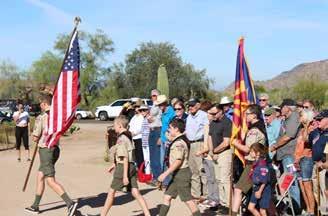
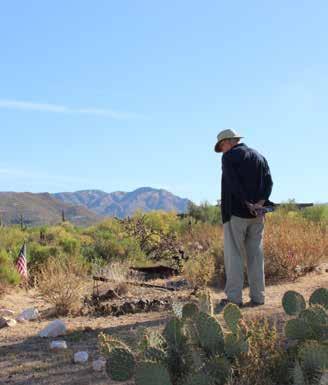

• Veterans Suicide Prevention Hotline: 800-273-8255, press option 1
• National Suicide Crisis Hotline: 988, press option 1
• Maricopa County Crisis Line: 800-631-1314
• Northern Ariz. Crisis Line: 877-756-4090
• Emergency Situations: Call 911 or go to nearest emergency room
Tapp speaks from personal experience, having faced his own post-service mental health challenges.
“I discovered I suffered from anxiety and depression without even knowing what they were,” he admits. “The first time — and honestly, it was the VA that identified this for me — when they said, ‘You’re suffering from anxiety, depression, and PTSD,’ I didn’t even believe it. I didn’t understand that what was happening to me was related to these conditions.”
In recent years, significant legislation has been enacted to address the veteran mental health crisis, though implementation challenges remain. The COMPACT Act stipulates that any veteran — whether enrolled in VA services or not — can go to any VA or non-VA emergency room for emergent suicidal care, with coverage for up to 30 days of inpatient care and 90 days of outpatient treatment.
However, Tapp notes that resource limitations continue to hamper effective implementation.
“There’s a growing crisis in the United States, and specifically in Arizona, which unfortunately is one of the top states leading veteran suicide rates,” Tapp explains. “Resources have been allocated and federal laws like the Mission Act and the Compact Act have been passed to try to address this crisis. Unfortunately, when it comes to the Veterans Administration, much of their effort is hampered by lack of funding.”
The practical effect of these funding shortages is that veterans in crisis may face delays in receiving care.
“Funding shortages are essentially forcing the VA back into a backlog situation because they can’t process referrals when they don’t have the money to pay for them,” Tapp adds. “It’s become increasingly difficult over the past year or two for veterans to receive the referrals they need when seeking behavioral health services.”
In some communities, veteran-led organizations have stepped up to fill gaps in the system.
“It’s crucial as a community that we as veterans take care of each other — that we understand the sacrifices and the emotional and mental toll our service has taken,” Tapp says.
Beyond VA services, organizations like Disabled American Veterans and the Wounded Warrior Project provide critical support, sometimes even funding mental health treatment at civilian facilities when VA services are unavailable.
Notably, these local intervention efforts have saved lives.
“Within the past year, I’ve worked with a local veteran who turned to alcohol to manage his PTSD from his time in service,” Tapp recounts. “When we first became aware of him, he was intoxicated and threatening
to take his life with a gun. A local Army veteran engaged with him one-on-one, made him safe, and helped him sleep it off.”
This initial intervention was just the beginning, as addressing the underlying conditions required further steps.
“Together, we were eventually able to get the gentleman suffering from both alcoholism and, more importantly, the underlying PTSD to a treatment facility,” Tapp continues. “The veteran completed a treatment program and is doing great now.”
But for every success, there are tragedies that underscore the urgency of the problem.
“Just a couple months ago, an active-duty service member aboard a Coast Guard cutter, while deployed on a drug interdiction patrol in the Pacific off the coast of Mexico and California, took his own life by leaping from the ship,” Tapp shares.
“The damage done to those around that person — knowing they felt they had to end their life — is equally catastrophic to the family, friends and fellow service members and veterans who would have dropped anything to help.”
For family members and friends, recognizing warning signs is crucial. Tapp advises watching for changes in behavior such as reclusiveness, disinterest in activities previously enjoyed, increased alcohol consumption, and unusual irritability or anger.
“What’s ironic about this is that service members are trained to handle extremely intense, sometimes life-threatening circumstances with clear-mindedness and well-


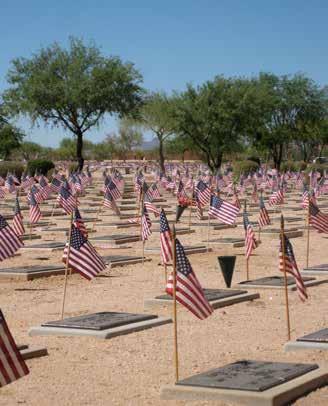
thought-out responses,” Tapp says. “But then years later, a veteran might experience someone cutting them off in traffic and have an immediate overresponse to that circumstance. That’s a key indicator that person is struggling and needs to talk to someone.”
He emphasizes that combat experience isn’t a prerequisite for servicerelated mental health challenges.
“I often tell veterans who never served in a combat zone that this doesn’t exclude them from service-related mental health challenges,” Tapp explains. “I’ve worked with veterans and active service members who actually feel guilty because they were never sent to a war zone.”
The routine dangers of military service — even in noncombat roles — can be traumatic, though many service members don’t recognize this until later.
“We do very dangerous things as part of our normal job, and because they’re routine, we often don’t recognize how dangerous they are until we’re not doing them anymore,” Tapp notes. “That’s when those compartmentalized memories start to seep out, and suddenly you’re struggling.”
As Memorial Day approaches, advocates such as Tapp are calling on communities to expand their understanding of service-related sacrifice and loss. With June designated as National PTSD Awareness Month, the holiday provides a timely bridge to ongoing advocacy efforts.
Tapp’s message is clear: “If someone is struggling with suicidal ideation, PTSD, or however it’s manifesting itself, take them to the hospital or an emergency room — that’s what kicks off the process. It’s hard for someone to do the right thing in that moment because they might worry about forcing a stigma on that veteran, but not taking them to an emergency room is far harder to live with if their mental health continues to deteriorate.”
Expanding Memorial Day observances to include recognition of these “hidden casualties” represents not only a more complete honoring of sacrifice but potentially a lifesaving conversation about mental health resources.
“The connection to Memorial Day is that we now commonly recognize that mental health wounds exist long after military service has ended and long after discharge from active duty,” Tapp says.
“Veterans suffering from suicidal ideation and PTSD — which are closely connected — deserve to have their struggles acknowledged. When they unfortunately lose their battle within, those numbers should be counted as casualties of the military service or campaign they fought in.”

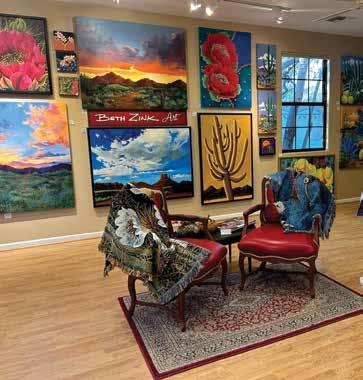


SStep into the lobby of Hampton by Hilton Carefree, and you’ll immediately notice something unique among hotel chains — walls adorned with vibrant artwork capturing the essence of Arizona’s desert beauty, the result of an innovative partnership transforming hospitality into a cultural experience.
Among the featured artists, fine arts photographer Jules Gallatig captures the delicate dance of light and shadow that brings desert flower petals and leaves to life. Gallatig, a Cave Creek resident, holds a Bachelor of Fine Arts degree from the Rochester Institute of Technology. In 2020, she moved from Pennsylvania to Arizona and found her passion for macrophotography. Her vibrant, colorful photos of flowers and desert plants highlight the intricate lines and beauty of nature.
“My confidence in myself as a photographer has grown leaps and bounds since I moved out here,” Gallatig says.
“I love the colors, texture and closeness of flowers and plants. I often get lost wandering through the desert or in a garden. Something will speak to me, and I need to stop and get a closer look. I love finding those pieces of nature.”
Gallatig is one of seven local artists whose work is featured in the lobby of the Hampton by Hilton Carefree, thanks to a unique partnership with the nonprofit Sonoran Arts League. The other artists include painters Beth Zink, Jeanne Bonine, Gail Haire and Meg Harper; fine art photographer Carla Meeske; and pencil artist Dick Mueller.
The hotel’s walls were crying out for good art! We have such talent in our community, and what better way to promote Carefree hospitality and local art than to partner together?
Jo Gemmill
Throughout the expansive lobby, guests are surrounded by the artists’ bright, bold acrylic and oil paintings, colored pencil drawings, and fine art photography depicting a variety of local scenes, ranging from serene desert landscapes and flowers to plants, local wildlife and starry desert nighttime skies.
“For us, this partnership is not just about the decor,” says Alec Madsen, general manager of Hampton by Hilton Carefree. “It’s about community and the chance to welcome each artist and bring our destination to life.”
A recent Grand View Research report revealed that art tourism is on the rise, and “many tourists seek to connect with various regions’ history, traditions and artistic expressions, recognizing art as a gateway to understanding a culture’s identity.”
While global trends validate the concept, Jo Gemmill, a Sonoran Arts League board member and owner of The English Rose Tea Room in Carefree, was

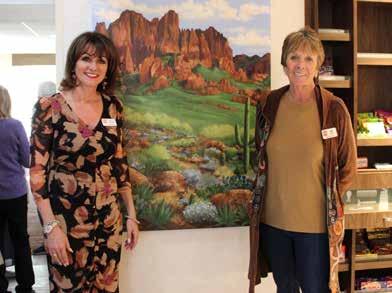
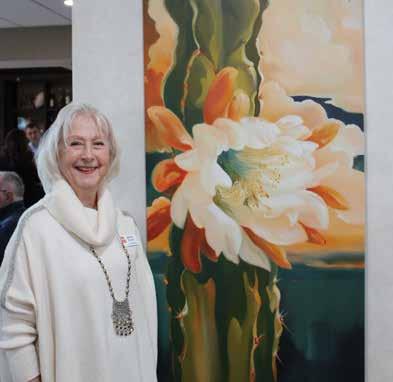
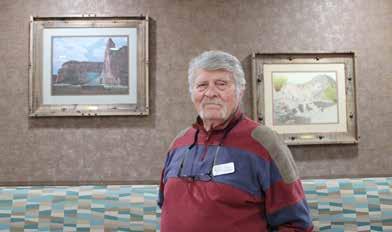
motivated by local vision when she approached Madsen. Her motive was to find a local community partner for the league’s new Art in Public Places initiative.
“Alec and I originally met through the Carefree Restaurant Association, and at that time the hotel was fairly new in town, having opened in 2022,” Gemmill says. “Since joining the board of the Sonoran Arts League and specifically, the Art in Public Places committee, I just knew a collaboration with the hotel and our local artists would be the perfect partnership. The hotel’s walls were crying out for good art! We have such talent in our community, and what better way to promote Carefree hospitality and local art than to partner together? Best of all, the hotel management agreed!”
Gemmill enlisted the help of painter Beth Zink, a League board member who also serves on the Art in Public Places committee. Together, with the help of Sonoran Arts League board President David Court, they prepared a proposal and a slideshow of art for Madsen to review with Jeff and Amber Morrow, local residents and part owners of the hotel, along with Lincoln Hotel Group and other investors.
Zink shares that the Hampton by Hilton Carefree team requested that the art convey Arizona, Western, Southwestern and Native American themes.
“When guests arrive at the hotel, we want them to feel welcome and also intrigued by their surroundings,” she says. “Guests viewing the art can scan a QR code that includes more details about the artist and takes them to his or her website.”
Like Gallatig, Zink also fell in love with Arizona when she moved here from Colorado many years ago. She captures the beauty of the desert through bold, vibrant contemporary floral and landscape acrylic paintings.
“The vegetation and terrain were so different from anywhere I had lived,” Zink explains. “During my first spring here, I was pleasantly surprised at the amazing, colorful flowers blooming from what looked like dead, snarled cactus and desert plants in the winter. I became captivated with everything about the desert.”
During the first artist reception in the hotel lobby, Carefree Mayor John Crane greeted guests and shared his excitement for the collaborative project.
“I believe this is just the beginning of a strong and growing
partnership between the Hampton by Hilton Carefree, the town, the Sonoran Arts League and our local businesses and organizations,” Mayor Crane says. “Carefree is known for its unique character and welcoming community, and this innovative partnership enhances that.”
Gemmill notes the league is also seeking more opportunities to showcase art in public places.
“Since the partnership between the Hampton by Hilton Carefree and the Sonoran Arts League has proven to be so successful, the Arts in Public Places committee welcomes future requests for publicly displayed art,” she says, adding that inquiries can be sent to David Court at president@sonoranartsleague.org.
Madsen says the partnership with the league aligns with Hampton by Hilton Carefree’s mission of going above and beyond to provide guests with an exceptional stay.
“Thanks to the Sonoran Arts League, we have created a unique experience that is memorable for our guests,” he adds. “It has been rewarding to support our local community while watching our guests connect with the art.”
The partnership represents a growing trend in which hospitality and art intersect to create authentic cultural experiences for travelers. With new artwork scheduled to rotate into the hotel in June, visitors can experience fresh perspectives of Arizona’s beauty throughout the year. Whether you’re a local art enthusiast or a visitor seeking to connect with Carefree’s creative spirit, this collaboration offers a glimpse into the soul of the desert through the eyes of those who know it best.
sonoranartsleague.org



Writer Joseph J. Airdo // Photography by Loralei Lazurek
SStacie Thomas stands in the morning light at her New River sanctuary, surrounded by a chorus of braying that echoes across the desert landscape. As the founder of One Step Wild Burro and Mustang Rescue, Thomas moves with practiced ease among dozens of long-eared residents — some curious and eager for attention, others hanging back with watchful eyes that still harbor traces of their wild origins.
“They’re really awesome animals, and it’s heartbreaking how a lot of people just don’t care,” Thomas says, scratching the ears of a burro named Bella while another nudges impatiently at her pocket for treats. “We’re their voice for protection.”
This voice has become increasingly crucial as wild burro populations grow throughout Arizona’s developing communities, creating a complex intersection of conservation, safety and coexistence that plays out daily on local roadways and properties.
Thomas’ journey to becoming the region’s foremost burro advocate began in 2018 with an unexpected opportunity.
“The Bureau of Land Management’s holding facility in Florence used to have a Trainer Incentive Program challenge, which gave trainers 100 days to transform a wild animal into a trained one,” Thomas explains. “When my friend decided to try it with a mustang, I thought, ‘I’ve never worked with donkeys before, why
not try a burro?’ That first burro, Milo, stole my heart.”
That love affair with a single burro blossomed into a full-scale rescue operation that became an official nonprofit organization just six months ago. Today, One Step Wild Burro and Mustang Rescue cares for 32 burros and 11 mustangs, along with one zonkey — a zebra-donkey hybrid — all at various stages of rehabilitation and training.
Thomas, who worked for years as a veterinary technician and at the Humane Society in Prescott, found her true calling in equine rescue.
“I decided to completely leave the vet tech field and focus solely on equines because, honestly, I found I appreciated their company more than dealing with the public,” she says. “The animals are just more straightforward.”
The name “One Step” reflects Thomas’ philosophy about working with wild animals — progress comes gradually, one step at a time. This patience is evident in everything from the gentle training methods she uses to the sanctuary’s overall approach to rehabilitation.
Crystal Haire, one of the rescue’s dedicated volunteers, understands the profound impact these animals can have. She describes her first experience with a 30-yearold donkey named Seymour.
They’re really awesome animals, and it’s heartbreaking how a lot of people just don’t care. We’re their voice for protection. Stacie Thomas
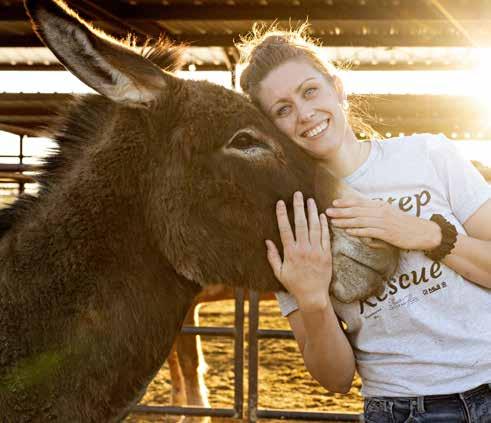
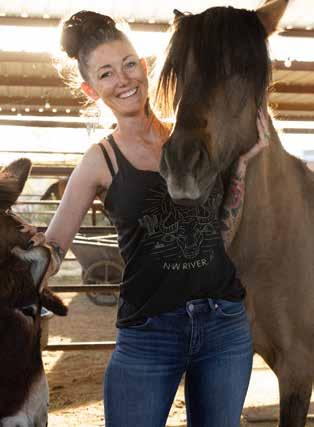
“To have a 30-year-old animal that had always been wild be so incredibly sweet and trusting of me immediately — that did me in,” Haire recalls. “I mean, I went there looking for something completely different, looked at Stacie and said, ‘Who is this and can I have him?’ When they look at you like, ‘Yes, please help me,’ it’s an honor for sure.”
The rescue’s work extends beyond the sanctuary’s boundaries into broader advocacy for wild burro safety and management throughout the region — an increasingly urgent mission as development expands into traditionally wild areas.
New River, Anthem and surrounding communities have seen a substantial increase in wild burro activity, with herds frequently crossing busy roads in search of water, food or simply trying to return to their home territories after being displaced by construction and human activity.
“There’s a desert area northwest of Lake Pleasant where they should all be, but they travel in search of food,” Thomas explains. “We had a herd of 11 out here in New River — or we used to have 11 — and they got trapped because the construction workers on I-17 put chain-link fence under the bridge. Once they crossed over to this side, they had no way of going back home. So they walk along trying to search for an opening, get confused and lost, and end up in our neighborhoods.”
The burros’ increasing presence in residential areas has created a divide among local communities. While some residents welcome the chance to observe these living symbols of the West, others grow frustrated when burros damage landscaping, tear up golf courses or leave their distinctive calling cards on manicured lawns. Thomas acknowledges

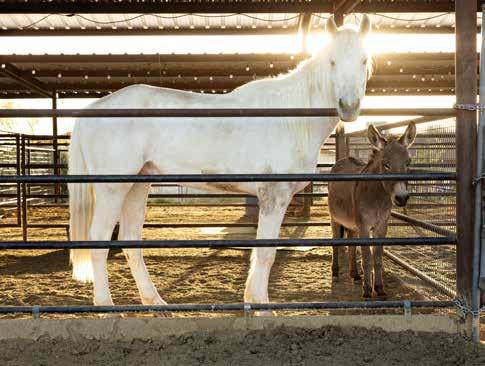
Among the most moving stories at One Step Wild Burro and Mustang Rescue is that of Renegade, a famous wild mustang from Oregon’s South Steens Herd Management Area who came to founder Stacie Thomas after being rounded up at age 12.
Thomas worked diligently with the challenging stallion for three years, even reuniting him with Lupine, a mare from his original wild herd that she found through a Bureau of Land Management internet adoption.
“He was one of the most photographed stallions in the wild in Oregon,” Thomas explains. “He was this stunning blue-brown pinto with crystal blue eyes, standing over 16 hands tall. People would come out just to photograph him.”
Despite her deep connection with Renegade, Thomas could see his wild spirit slowly fading during the training process. After consulting with several trainers, she made the difficult decision to contact Skydog Sanctuary in Oregon, which could offer him the freedom he craved.
“The trainer was able to ride him, but he didn’t enjoy it,” Thomas recalls. “I felt like they could be happier. When Skydog discovered who Renegade was, they immediately said, ‘Absolutely. We’ll be there in three days to pick him up.’”
The Oregon sanctuary offered the space Thomas couldn’t provide — 9,000 acres where Renegade and Lupine could return to something closer to their natural life.
“In an act of pure love, I let him go,” Thomas says. “It was the right thing to do.”
Tragically, Renegade passed away just a week after his release. But his legacy continues at One Step through his granddaughter, Azalea, born to Renegade’s daughter who was later rescued pregnant from the same wild herd.
“I had a deep love and connection to Renegade,” Thomas says softly. “Many people could feel his intense spirit through pictures and social media posts, but very few people were able to form a strong bond with him. I am grateful he allowed me to be one of the few he came to trust. He died wild and free and was the happiest horse ever to get that gift back.”
this tension, noting that the animals’ messy habits can test even the most wildlifefriendly neighborhoods’ patience.
This urban-wildlife interface becomes particularly dangerous when burros wander onto local roadways, including Old New River Road and Interstate 17, with often fatal consequences for the animals and serious risks to motorists. Thomas has been advocating for better preventive measures, including improved signage and public education.
“There’s absolutely no signage other than general ‘Watch for Animals’ signs, which aren’t specific enough,” Thomas says with frustration. “I’d prefer to get signs painted directly on the roadways rather than just posted on signs, because people are looking down, not up. At the Salt River, they have reflective ‘Watch for Horse Crossing’ markings on the road, and it works pretty well.”
Both Thomas and Haire point to simple solutions that could significantly reduce accidents: maintaining fence integrity, closing gates, reducing speeds, and most crucially — not feeding wild burros, which conditions them to approach roads and vehicles.
“We totally discourage people from feeding them because it makes them friendlier to humans,” Thomas emphasizes. “Then they develop behaviors like standing in roadways to stop cars because they associate vehicles with food. They think, ‘A car has food. People have food. Let’s stand in the roadway and stop vehicles.’ And not all vehicles stop.”
For volunteers like Haire, these preventable dangers are particularly frustrating. She believes community advocacy is essential to creating meaningful changes that would protect both animals and motorists.
“I think anyone willing to call the county or state to express their concern would make a difference,” Haire says. “This isn’t just about the donkeys — it’s a very unsafe situation for drivers as well. So it’s not a one-sided issue.”
While the challenges are significant, Thomas remains committed to both rescue and education. The sanctuary offers several community engagement opportunities, including “Doodling with Donkeys” sessions and visits to assisted living facilities with their mini burros. It is even hosting a special “Dinner with the Donkeys” event on May 10.
“When we started, we were actually the very first donkey rescue in northern Phoenix,” Thomas says proudly. “Now there are two more in the area, which shows how the movement is growing. People are finally understanding just how amazing donkeys are and recognizing that they need our help.”
Each animal at the sanctuary has its own distinct personality. Thomas lights up as she introduces her charges.
“There’s Sassy, who’s exactly what her name suggests — very sassy,” Thomas notes. “She’ll let you know if she doesn’t like something by kicking, turning real quick, or rearing up. Then there’s Bella, just a complete sweetheart—laid back and gentle. Milo’s our racer — he doesn’t have the patience to stand still. Try to make him stay in one spot, and he’ll start kicking the bars with his front feet, just can’t stand being stationary.”
The sanctuary operates with minimal staff — just Thomas herself, Haire and another volunteer named Suzanne — making the daily tasks of feeding, cleaning, training and rehabilitation a significant undertaking.
“We are always looking for volunteers,” Thomas explains. “It’s hard to keep volunteers because a lot of times they think volunteering is just playing with the animals. When you volunteer here, we make sure the dirty work is done first, and sometimes that leads to a one-and-done situation.”
For those interested in helping, Thomas emphasizes three essential qualities: “We look for volunteers who are committed, patient and responsible. Those three qualities are essential when working with these animals.”
Both Thomas and Haire stress that support can come in many forms — from hands-on volunteer work to financial contributions — with all efforts directly benefiting the animals in their care.
As the morning sun climbs higher over the sanctuary, the distinctive braying of burros creates what Thomas describes as a “symphony” across the neighborhood. It’s a sound that represents both challenge and hope — the delicate balance of protecting wild heritage while navigating the realities of human expansion.
At One Step Wild Burro and Mustang Rescue, that balance is achieved one patient step at a time.
oswbmr.com


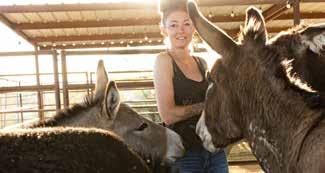

Guitar in hand, a fresh-faced young talent steps up to the mic, the rhinestones on her belt flashing brilliance beneath the spotlight as the crowd holds its breath for a moment — waiting for that first note to wash over them. At just 13 years old, North Scottsdale resident Evelyn Errante is pursuing her dreams of becoming a worldwide country music sensation.
“Honestly, music is my whole life,” Evelyn says, crediting her parents, Jenny and Eric, for taking her seriously when, at age 10, she sat them down and said she was determined to pursue a career in country music after attending a Carrie Underwood concert. “My parents were athletes, and they coach me like an athlete. I work hard, and I’m very dedicated. I love doing it because it doesn’t feel like work — I’m pursuing my dream.”
Eric says Evelyn has always had a clear sense of purpose and drive when it comes to both her music career and personal identity.
Scan this QR code with your phone to experience Evelyn Errante’s powerful vocals and original songs, including “First Rodeo” and “'Til You Can't” on Spotify.


“She knows who she is,” he explains. “One of the compliments she gets when performing isn’t just about her singing ability, but her character — how kind she is. Those are the characteristics that matter most to us. The person she’s becoming is bigger than just her talents and her singing ability.
“Jenny and I were athletes, and we’ve been tossed into this world and are trying to navigate it and set her up for success. A lot of the intangibles we had as athletes — guiding preparation, hard work, being part of a team, handling adversity — they’re all applicable. We’ve tried to find opportunities to strengthen those skills and experience the lessons to make her stronger and better. It’s amazing to see how far she has come in such a short time.”
Evelyn’s lifelong love of singing is now her professional pursuit. She’s performed on many stages in the Valley, on Phoenix morning television and has sung the national anthem at a Phoenix Suns game. This spring, she captivated crowds during Cave Creek Rodeo Days, adding another impressive credit to her growing resume. Her remarkable voice — demonstrated in original songs “First Rodeo” and “’Til You Can’t” — has a tone and strength beyond her years and a stage presence that has audiences falling in love with her spirited personality.
In addition to Underwood, she’s inspired by powerhouse female vocalists such as Grammy winner Lainey Wilson, Shania Twain, Dolly Parton, Miranda Lambert and Faith Hill.
“They’ve all left their mark on me, and their legacy is amazing,” she says.
We’re the Wild West, and that’s how our music is. You can bring your own style and fit in. Dennis Petty

Between online schoolwork, voice, guitar and piano lessons, Evelyn focuses on songwriting, drawing inspiration from her own life experiences as well as books and movies.
“I want to create songs that people can relate to, whether funny or sad,” Evelyn explains. “I want to convey emotions and make people feel like they’re understood. My goal is to have a positive impact on people with my music.”
Since every entertainment sensation begins with the small seed of vision, drive and a supportive network, Evelyn is professionally represented by Dennis Petty, CEO of DDP Worldwide and co-founder of the Arizona Desert Country Music Association. After years in the entertainment and management business, Petty saw the need for an organization focused on advancing the Grand Canyon State’s country music talent, just as such associations exist in Texas and Nashville.
“I noticed that not many Arizonans get their music played on the radio,” he recalls. “We have a lot of great musicians and songwriters in this state. They’re just not getting the attention that they need.”
DDP artists, including Evelyn, Bobby Joe Bell and Lacey Rashea, regularly appear at local venues — Harold’s Corral and the Buffalo Chip in Cave Creek; Foley Ranch at Desert Ridge and The Stillery in Norterra. Further south are Rooster’s in Mesa and the new Rusty Spur in Apache Junction.
AZDCMA seeks to create a community that draws from this well of homegrown talent and the ardent fans who sing, line dance and two-step along to the rich music tradition grown from dusty desert roads and plucked from brilliant Arizona sunsets.
When he approached the station owner of KSWG-FM 96.3 Arizona’s Real Country about a radio program to promote Arizona artists, the response was a resounding “Yes!”
Petty and Diana Blewer — his wife and business partner — teamed up with accomplished country performer Shari Rowe
for a weekly 7 p.m. Sunday show, “Arizona on the Rise.” Each week, a different Arizona artist is featured along with six of their original songs and a sampling of songs by artists who inspire their work.
The radio show is just one of the Arizona Desert Country Music Association’s many initiatives to promote and develop Arizona’s unique country music tradition and to make Arizona the “Country Music Destination of the West” — a hub for talent, a driver to develop a fan base here and across the country through social media, and hopefully a thriving culture and live performance haven that keeps locals from being forced to pull up stakes and leave for Nashville in order to “make it” in the industry.
Petty and Jeremy Weeks, DDP’s executive director, are determined to put the state on the map during a time of the genre’s enormous popularity. After all, this is the state that gave the world Waylon Jennings, Glen Campbell, Marty Robbins, Linda Ronstadt and, more recently, Tanya Tucker and Dierks Bentley.
“I’ll put it this way,” Petty says. “In the East you have the Nashville sound; in the South it’s Red Dirt; in California, it’s the Bakersfield sound. Arizona never really had its own sound. Now, the way some writers are writing and the sound that results is a melting pot. You’ve got good classic country, ‘90s country, and folk Americana country and you take all those and throw in the outlaw country sound, and blend it all together and that’s what’s coming out of Arizona now.
“We’re the Wild West, and that’s how our music is. You can bring your own style and fit in. You don’t have to be a certain way or define yourself one way to play your music. That happens in other places, but here we say that we want your best — I don’t care if you use a fiddle, a steel guitar or an electric guitar.”
Petty notes that many local songwriters, including Rowe, are inspired by the desert, and it comes through in the music. It’s something special to foster and celebrate.

The Arizona Desert Country Music Association offers three membership tiers designed to connect music lovers, creators and industry professionals:
• Super Fan ($149) — Perfect for enthusiasts who want early access to events, exclusive content and voting rights in the association.
• Pro ($349) — Tailored for performers, songwriters and industry professionals, offering networking opportunities, performance possibilities and marketing support.
• Media/Business ($749) — Provides sponsorship opportunities, advertising options and business development connections. All members receive the quarterly AZDCMA publication, priority seating at performances, invitations to exclusive events and special discounts from partner businesses. The first 100 members can access special founding member rates at azdcma.com.

This fall, Weeks says there will be a kickoff party for AZDCMA, and anyone — fans, songwriters, singers, industry professionals including producers, engineers and agents, and venue owners — is welcome to join the association. Members have the opportunity to attend exclusive events, performances, seminars, retreats and festivals to build community and recognition. The team also envisions an Arizona Country Music Awards ceremony to highlight our state’s incredible talent.
“We want fans, businesses, media and singers to join,” Weeks says. “We’ll have presale tickets for members, and as their favorite artists grow in popularity and perform at larger venues, they will get early ticket access.”
The AZDCMA is also developing a mentor system for more experienced artists to take younger ones under their wing.
That mentorship and guidance add to the experience and potential of artists like Evelyn, who says she has been happily surprised and flattered when so many fellow artists show respect for the hard work she’s putting in and take her seriously as an emerging talent.
“I think everyone has their own unique style, and we are all pursuing a dream and supporting each other. Being a part of this community has helped me with confidence and leadership — and I love performing.”
Weeks imagines a bright future for Arizona artists and audiences, bringing everyone together to “live life,” connected through the power of music. He envisions a future entertainment district similar to Nashville’s Broadway — filled with honky tonks, live music venues and perhaps recording studios — a hub for creativity, jobs and music tourism.
“We want to be a hub that captures the essence of Arizona artists and gives everyone in the state — or even internationally — an avenue to view them, to learn about them, to hear their music and their stories.”
As the Arizona Desert Country Music Association continues to build momentum, the future looks as brilliant as an Arizona sunset for the state’s thriving country music scene. From emerging talents like Evelyn Errante to experienced industry professionals, a community is forming that honors Arizona’s rich musical heritage while forging its own distinctive sound.
Through initiatives like the weekly radio show, music festivals and involvement with thriving live performance venues, the AZDCMA is blazing a trail for local artists to find success without leaving the desert Southwest. The spirit of the Wild West lives on through Arizona’s country music — a sound as vast and captivating as the landscape that inspires it.
azdcma.com
Arizona’s dramatic landscapes and cowboy heritage have inspired generations of country music legends. From the 1955 launch of “Arizona Hayride” at Phoenix’s Madison Square Garden to today’s thriving scene, the Grand Canyon State has cultivated distinctive musical voices:
Waylon Jennings — The outlaw country pioneer began his professional career as a DJ in Coolidge before forming his band The Waylors, who became regulars at JD’s in Tempe. Though Nashville called, the Country Music Hall of Famer returned to Chandler later in life.
Glen Campbell — His love of golf brought this legend to Phoenix’s Biltmore Estates. The Arizona Music Hall of Fame member’s hits like “By the Time I Get to Phoenix” and “Rhinestone Cowboy” cemented his legacy in country music history.
Marty Robbins — This Glendale native turned his love of old cowboy songs into stardom. After serving in the Navy during World War II, he became a Phoenix favorite at Vern & Don’s before achieving national acclaim.
Billie Maxwell — Arizona’s first female country recording artist grew up in Springerville’s White Mountains. Maxwell’s ranching background informed her music, which she first performed with her family’s orchestra before recording three solo albums in 1929.
The Arizona Wranglers — Founded by working cowboy Romaine Lowdermilk in the late 1920s, this pioneering group gained West Coast fame collaborating with Western movie star and Willcox native Rex Allen.
Linda Ronstadt — This Tucson native from a ranching family became the “first lady of rock” while pioneering female alternative country music. Her powerful voice earned her 11 Grammys and induction into the Rock & Roll Hall of Fame. The versatile artist still calls Tucson home.
Dierks Bentley — Phoenix-raised Bentley credits Camelback Mountain hikes for inspiring songs like “The Mountain.” Though Nashville-based, he maintains Arizona ties through his Old Town Scottsdale venue, Whiskey Row, and by performing with the Phoenix Symphony in 2018.

Photography by Carl Shultz
TTucked away in the heart of Carefree, the English Rose Tea Room continues to flourish as a delightful escape from the Arizona desert into the refined world of British tea culture. This cherished establishment offers a perfect setting for intimate gatherings, celebratory occasions or simply indulging in the timeless pleasure of afternoon tea.
Walking through its doors, visitors are greeted by an elegant atmosphere where magnificent floral arrangements, delicate bone china and crystal chandeliers create an ambiance of sophisticated charm. The welcoming interior invites guests to linger over steaming cups of perfectly brewed tea, while the thoughtfully redesigned patio, now adorned with cooling misters, provides a comfortable outdoor retreat even as summer approaches.
“I wanted to create a place where people could experience a true slice of British tradition in Arizona,” says owner Jo Gemmill, who has cultivated this enchanting haven in the desert for more than two decades. “Seeing families create memories here is what makes this tea room so special.”
The tea room’s enchanting princess parties have become a signature offering, delighting younger guests with magical experiences where beloved storybook characters join them for themed tea services. These events have become popular choices for memorable birthday celebrations and special mother-daughter outings.
This Father’s Day, the establishment is introducing a heartwarming “Dads Eat Free” promotion, encouraging families to share the unique experience of traditional British tea service together. It’s a thoughtful twist that makes the refined setting accessible to everyone in the family.
From the irresistible aroma of freshly baked scones to the indulgent touch of authentic clotted cream, every detail at the English Rose Tea Room speaks to a commitment to quality and tradition. Whether you’re a longtime patron or planning your first visit, this Carefree gem promises an experience that combines British elegance with genuine Arizona hospitality.
English Rose Tea Room
201 Easy St., Suite 103, Carefree
480-488-4812
carefreetea.com
I wanted to create a place where people could experience a true slice of British tradition in Arizona. “




Yield: 4 servings
This vibrant, no-greens salad celebrates summer’s finest strawberries paired with creamy mozzarella and buttery avocado. A sophisticated twist on traditional fruit salads, its make-ahead-friendly nature makes it perfect for warmweather entertaining. The balsamic glaze adds a sweettangy finish that elevates the fresh ingredients to new heights.
Ingredients:
1 cup sliced strawberries
1 cup cherry tomatoes, halved
1 cup halved mini mozzarella balls
1 ripe avocado, pitted and diced
1/3 cup pecans, toasted
1/3 cup loosely packed basil, torn
Extra-virgin olive oil, for drizzling
Sea salt and freshly ground black pepper
1/4 cup balsamic glaze
Directions:
In a shallow bowl or on a serving platter, place the strawberries, cherry tomatoes, mozzarella, avocado, pecans and basil.
Drizzle with olive oil and season generously with salt and pepper. Gently toss.
Just before serving, drizzle with the balsamic glaze.
Note: For the best presentation, prepare this salad no more than 2 hours before serving and refrigerate until ready to add the balsamic glaze.
thefancypantskitchen.com


